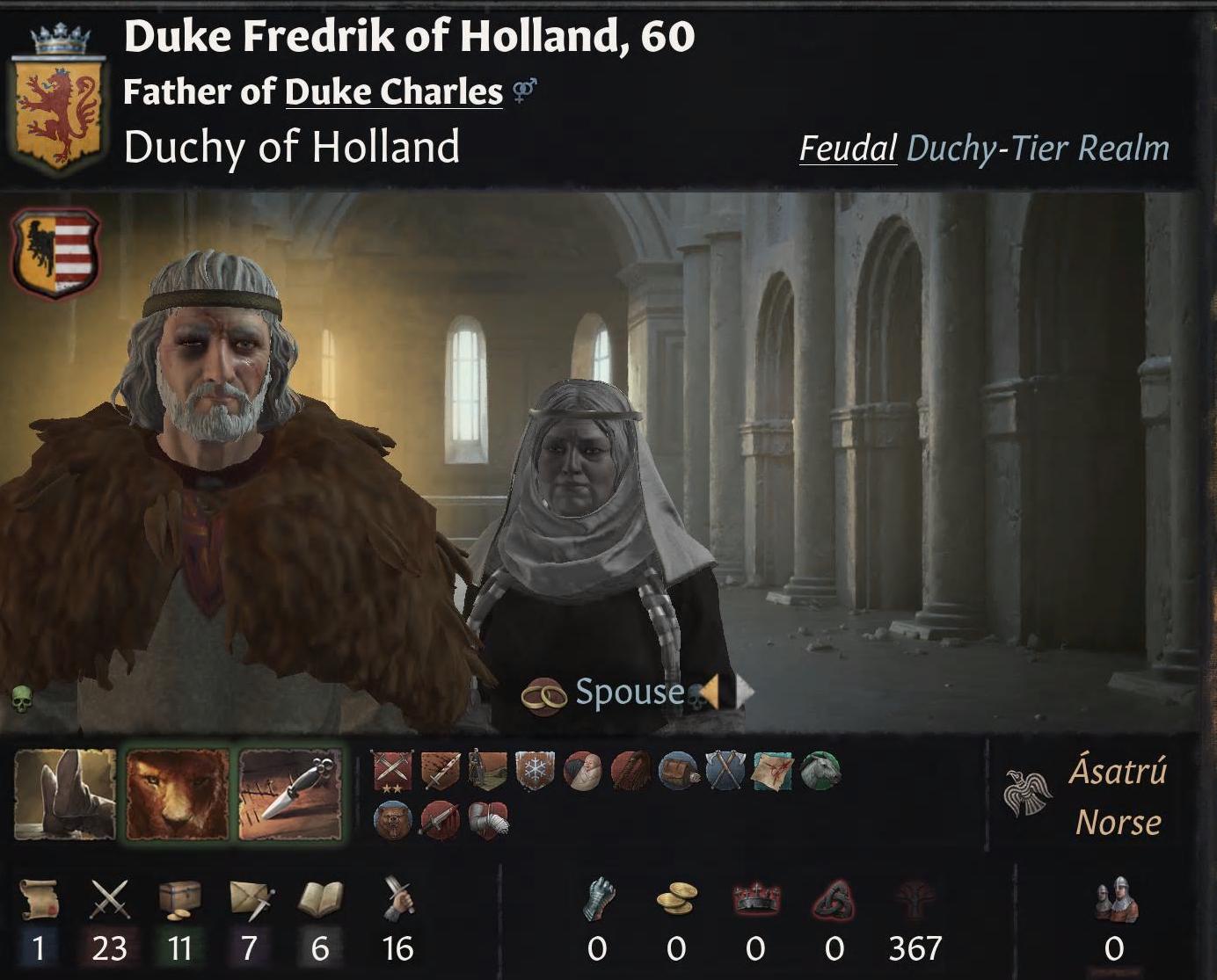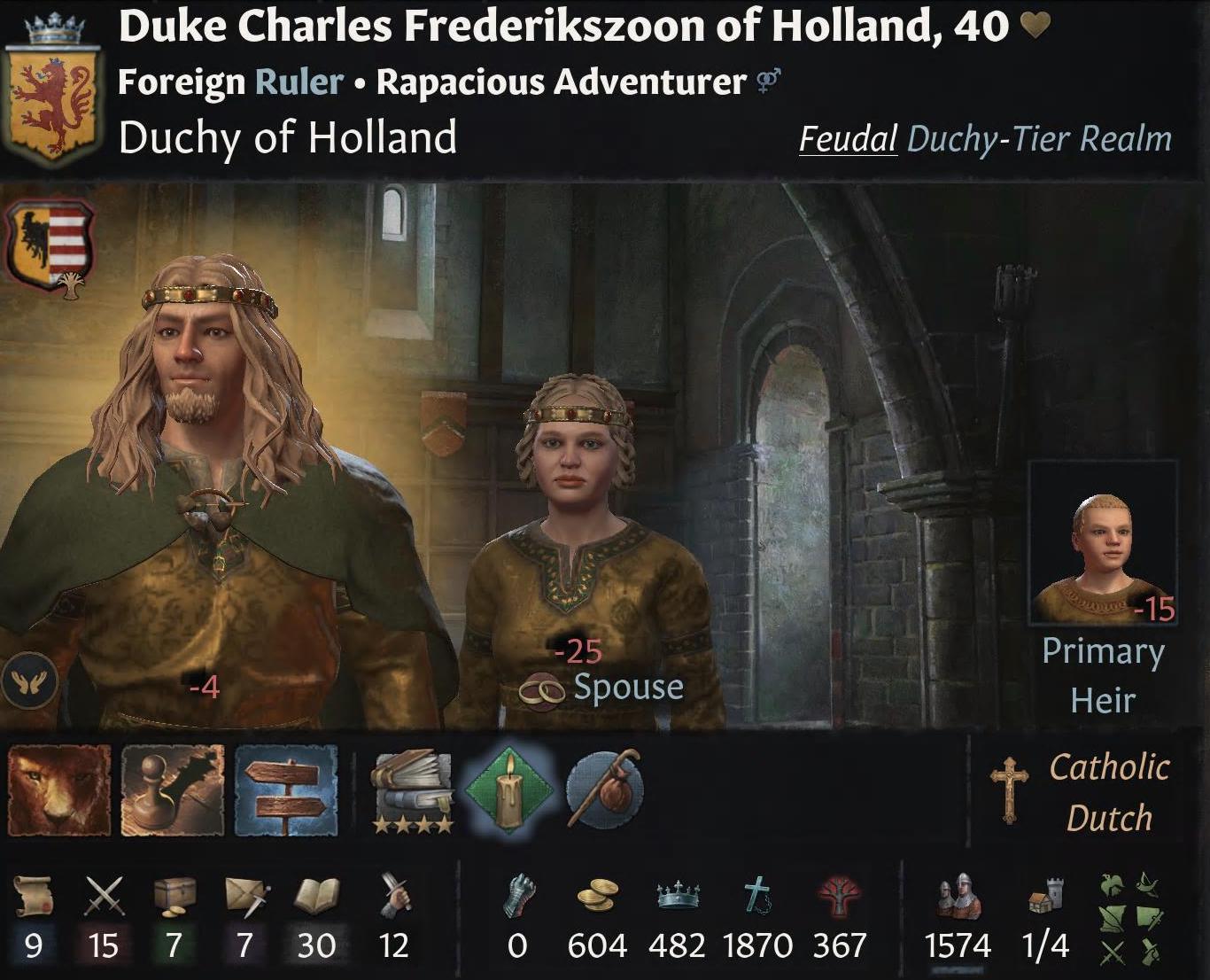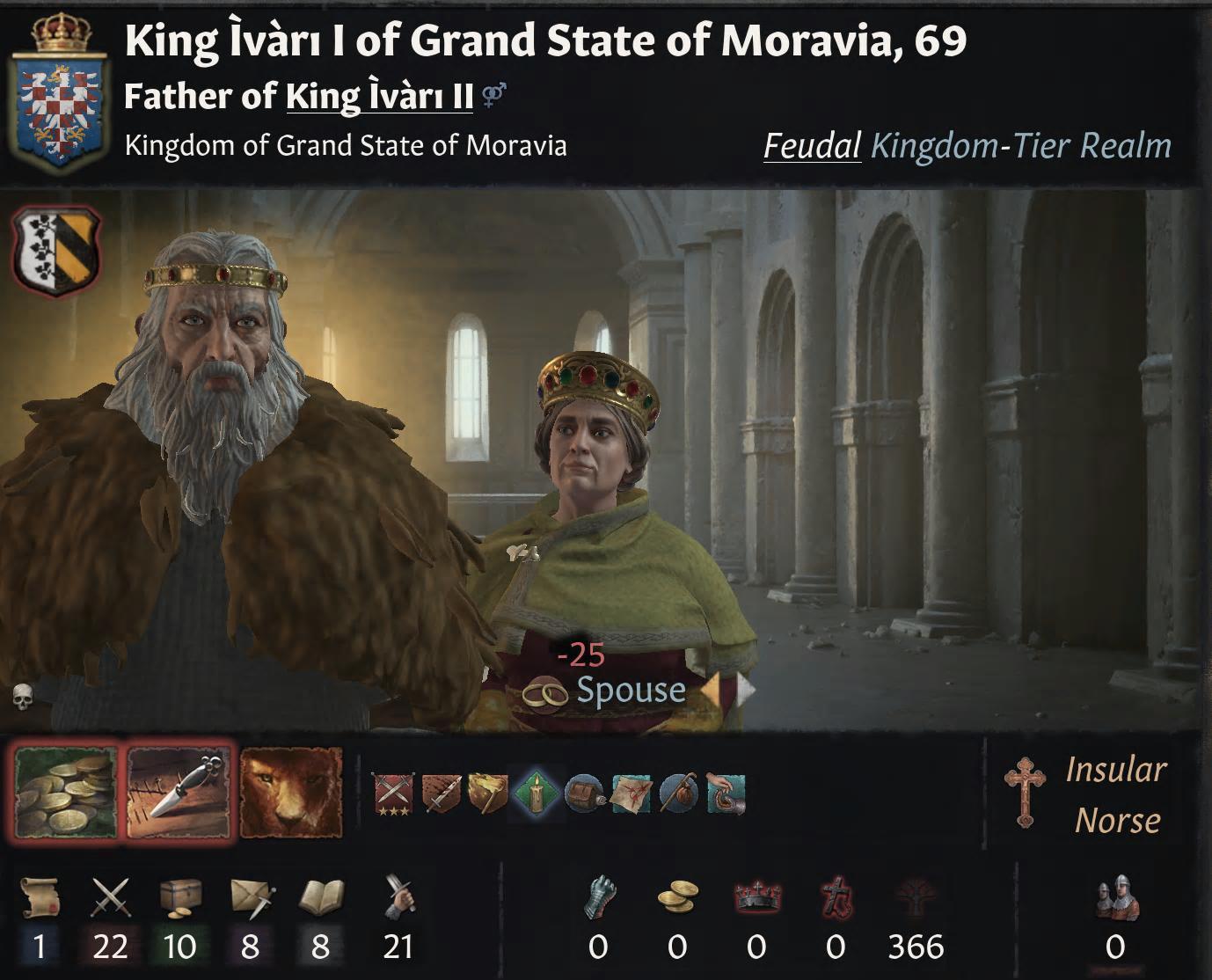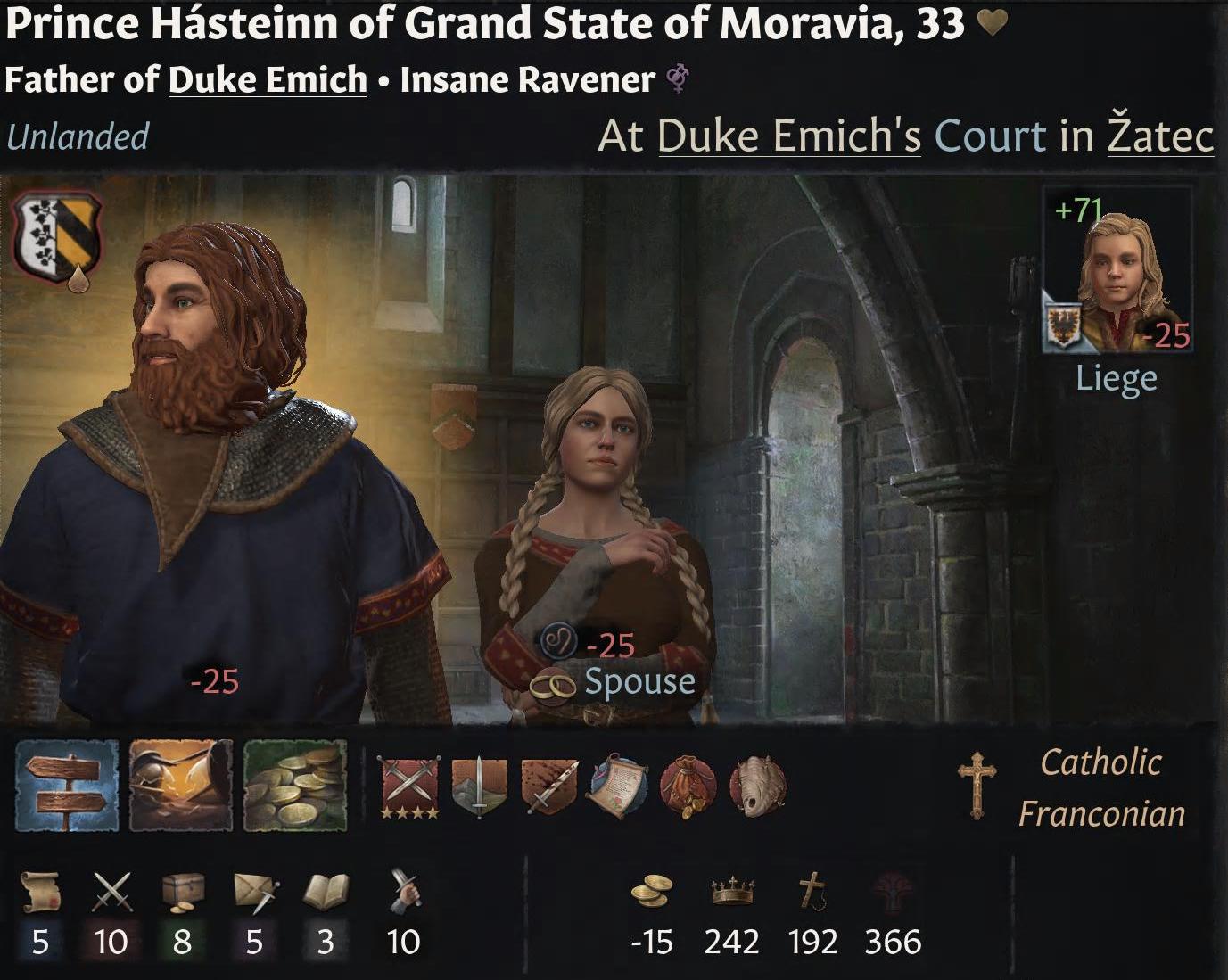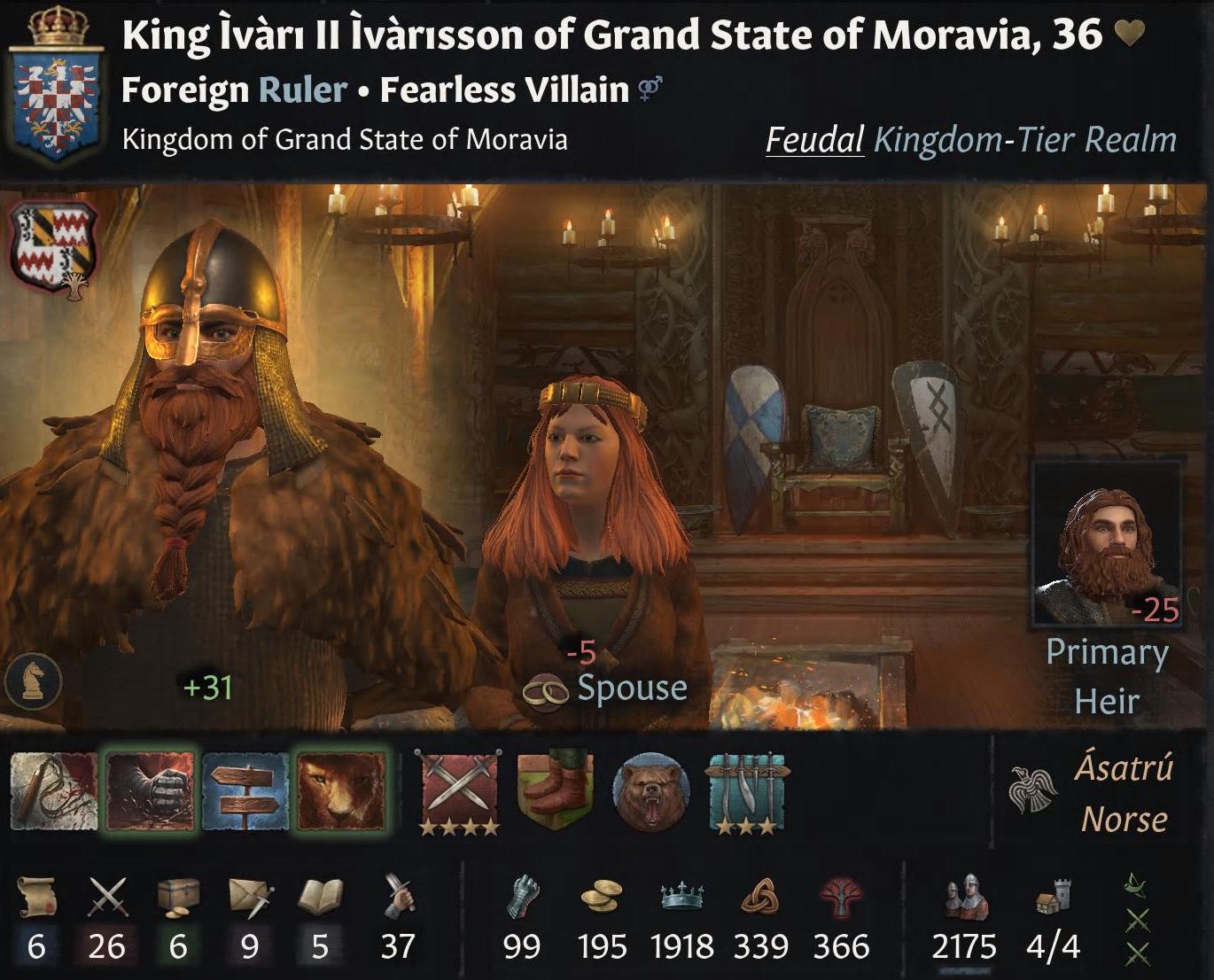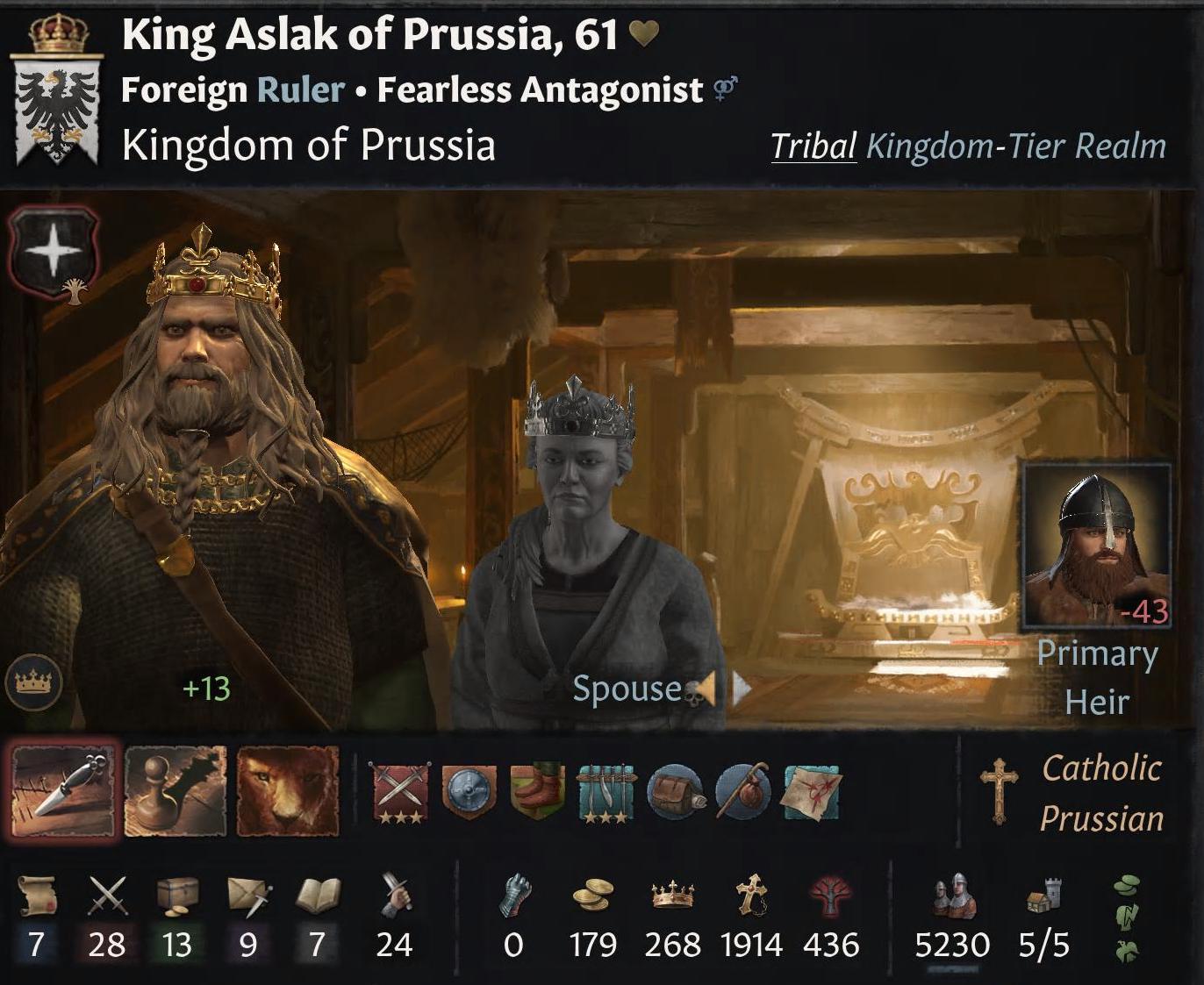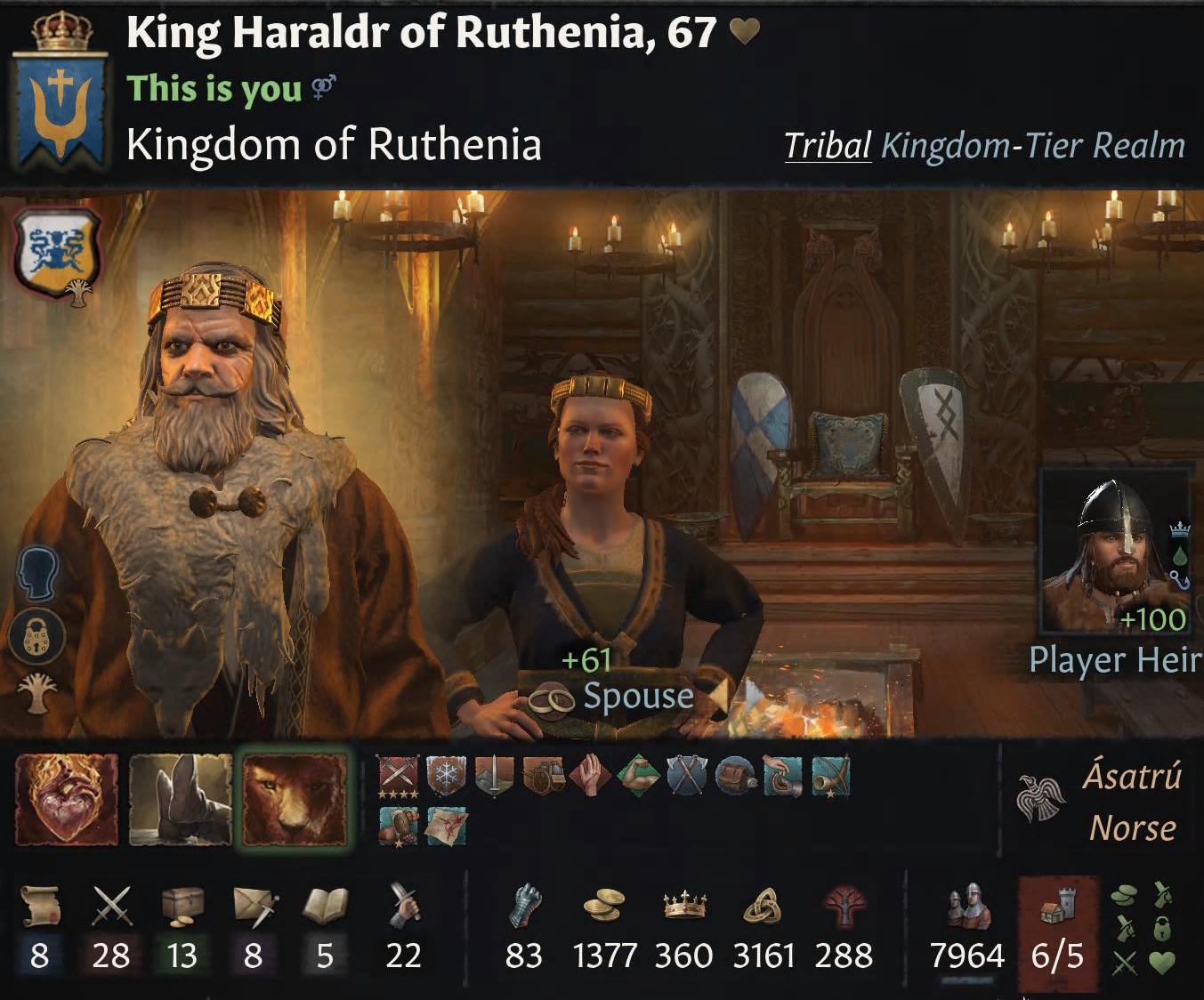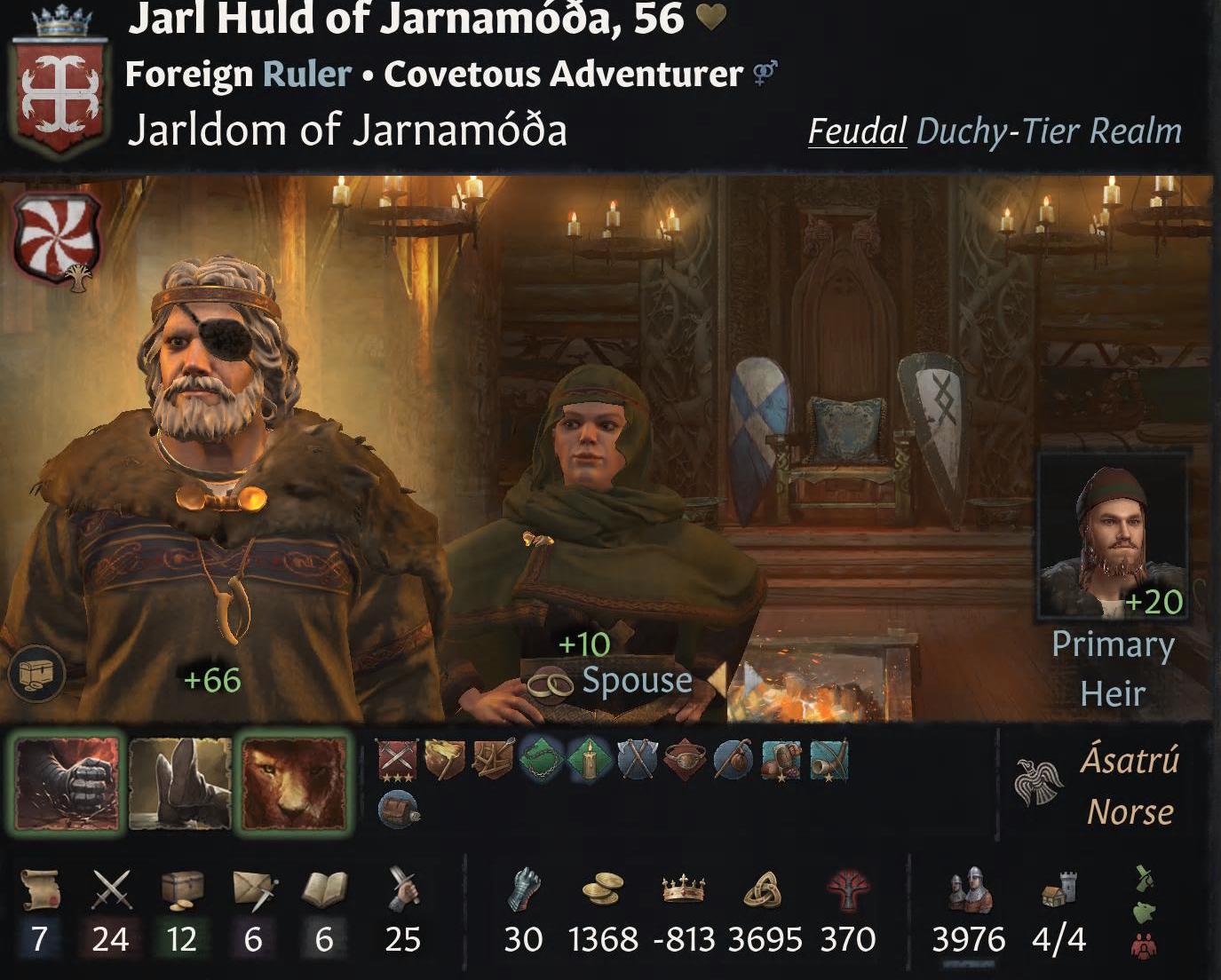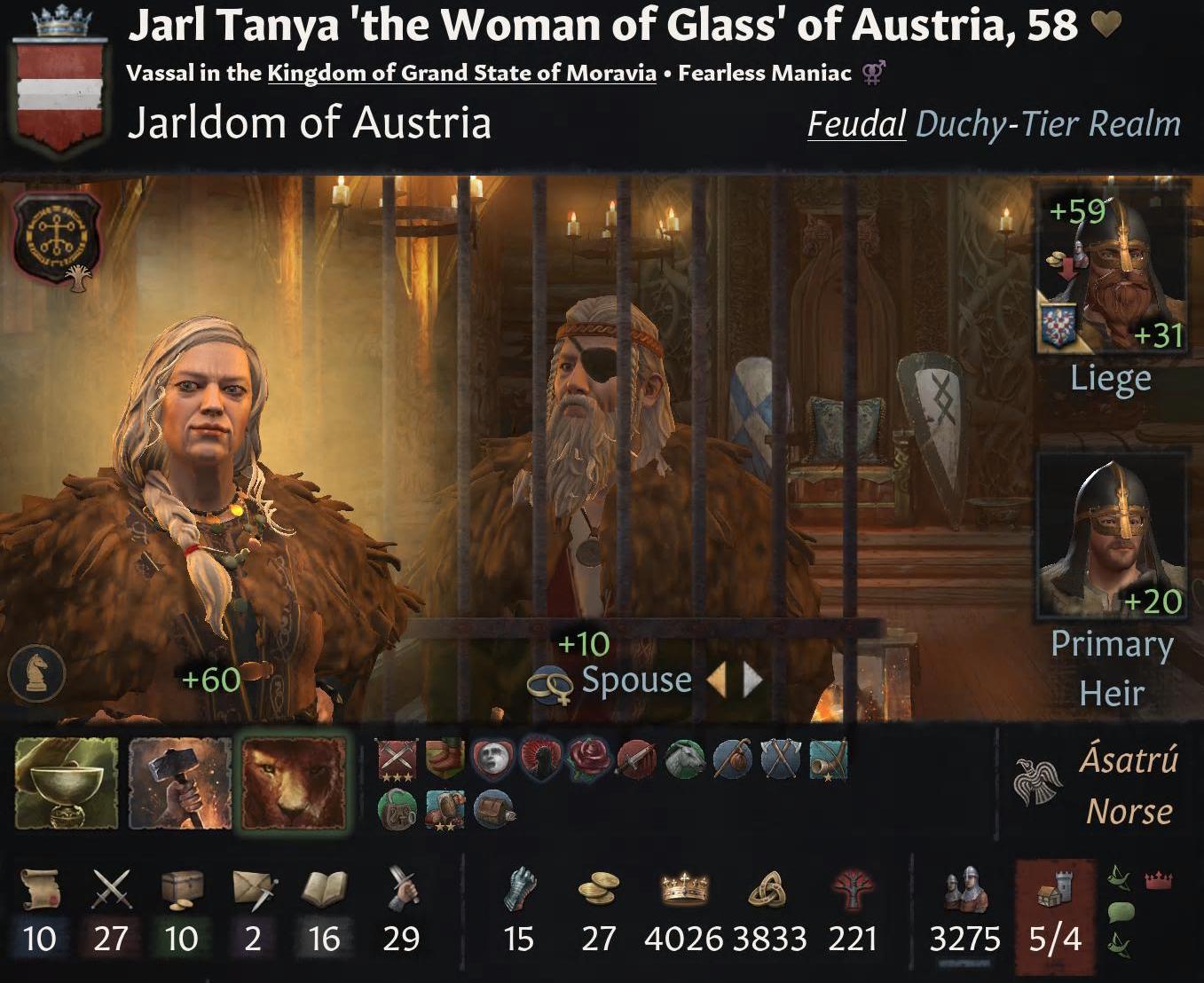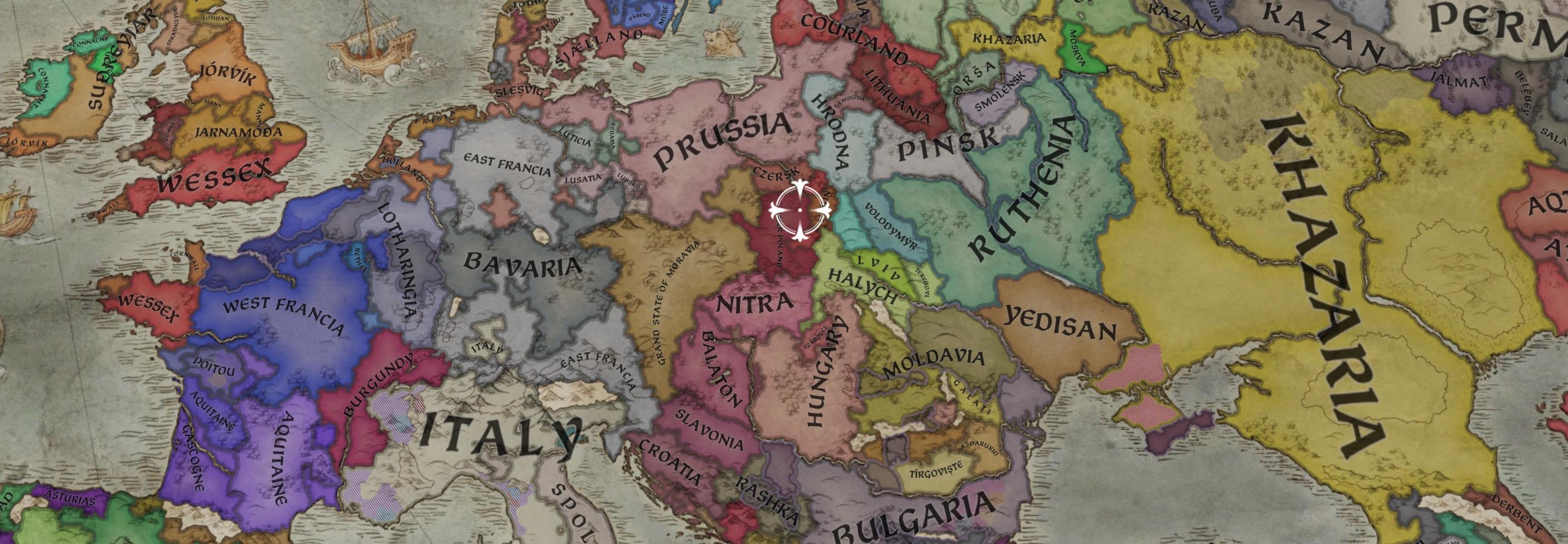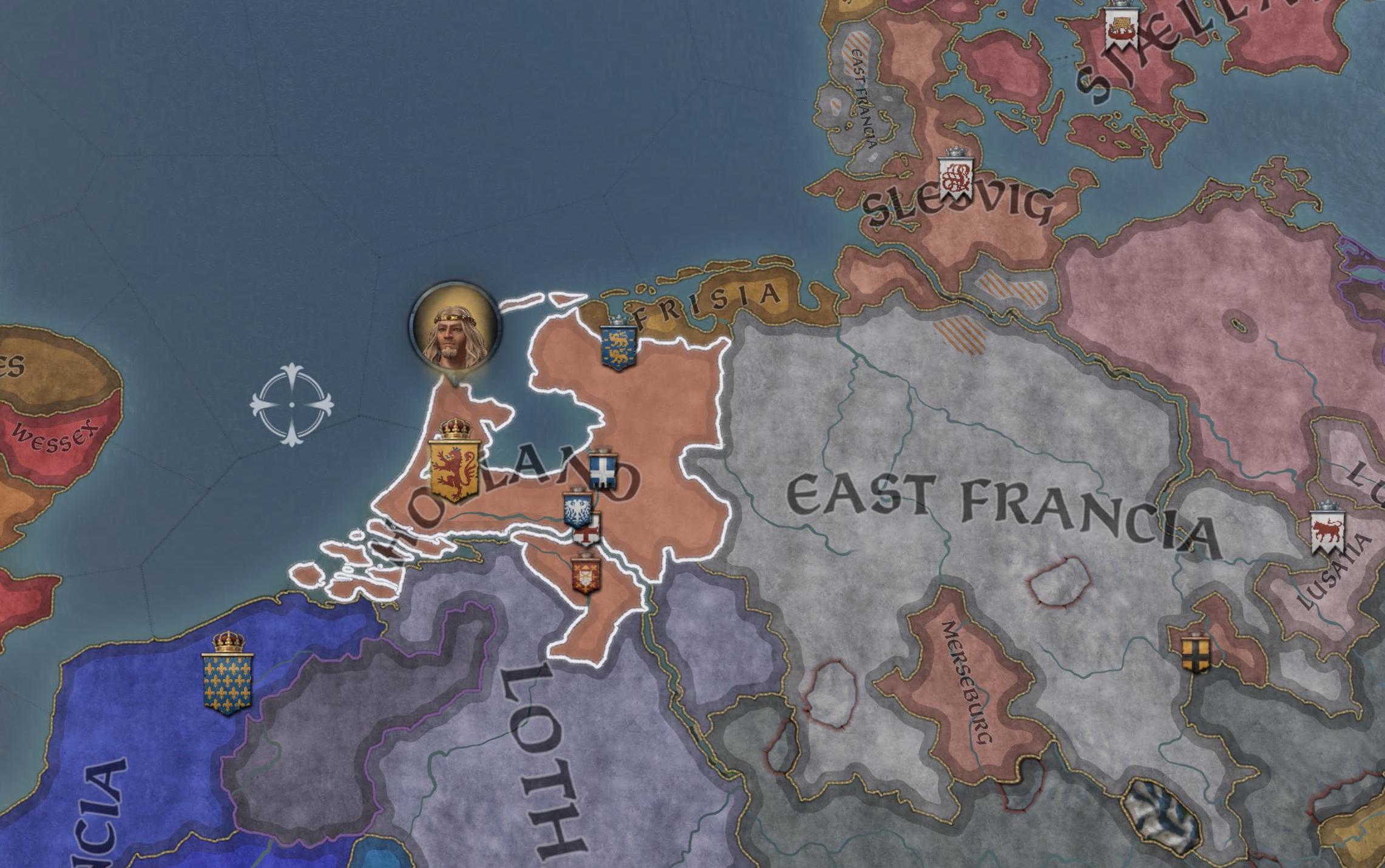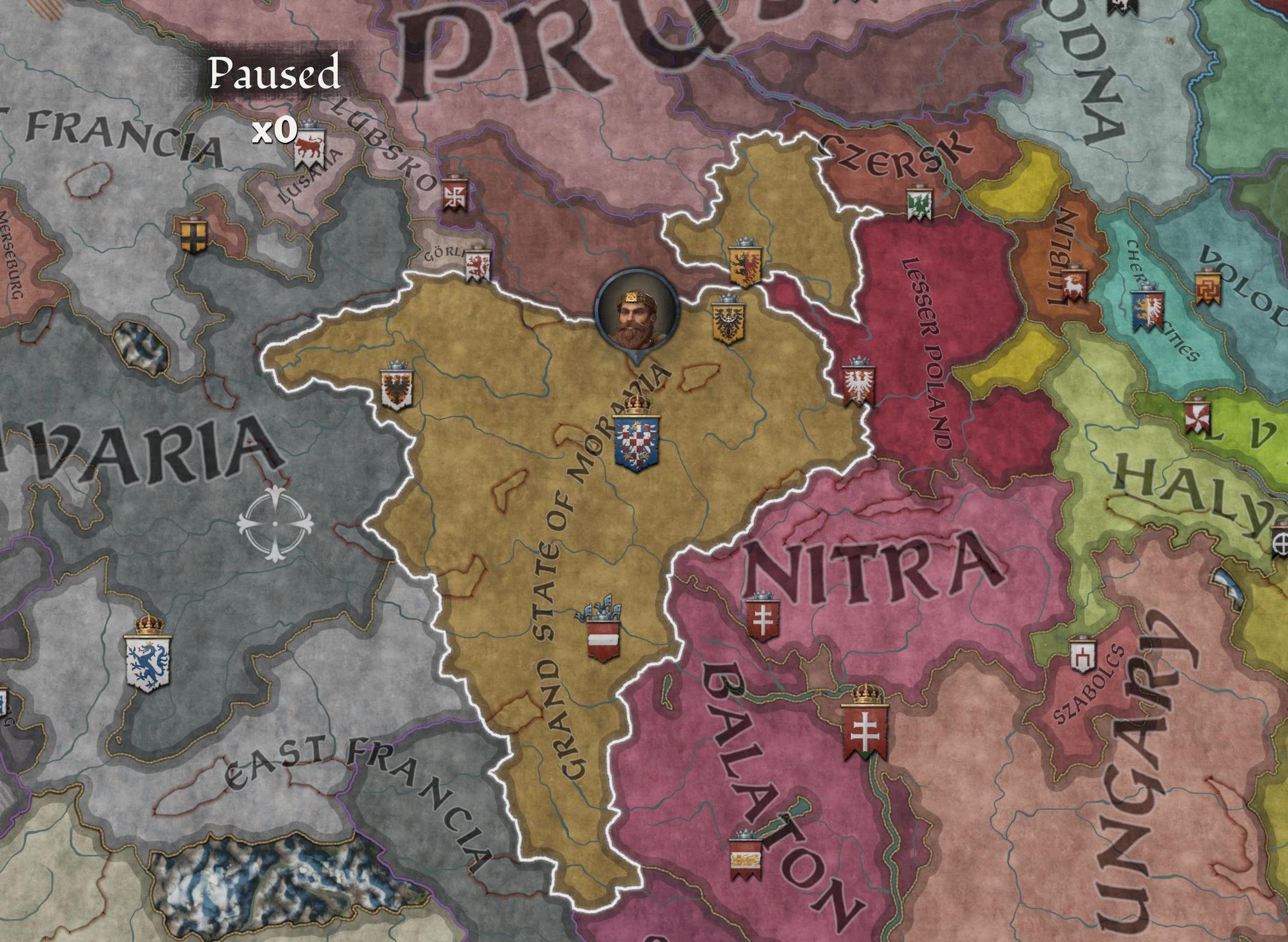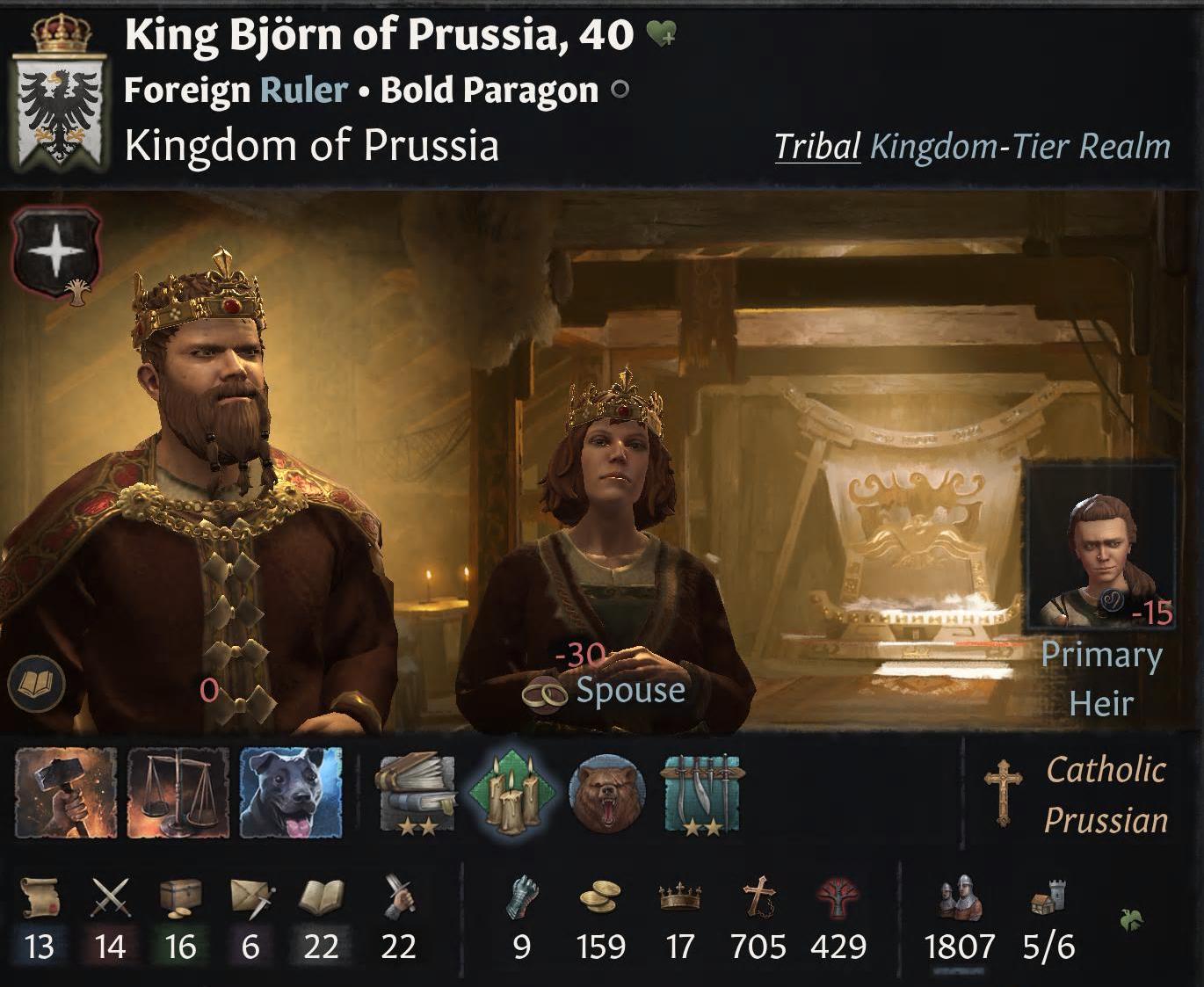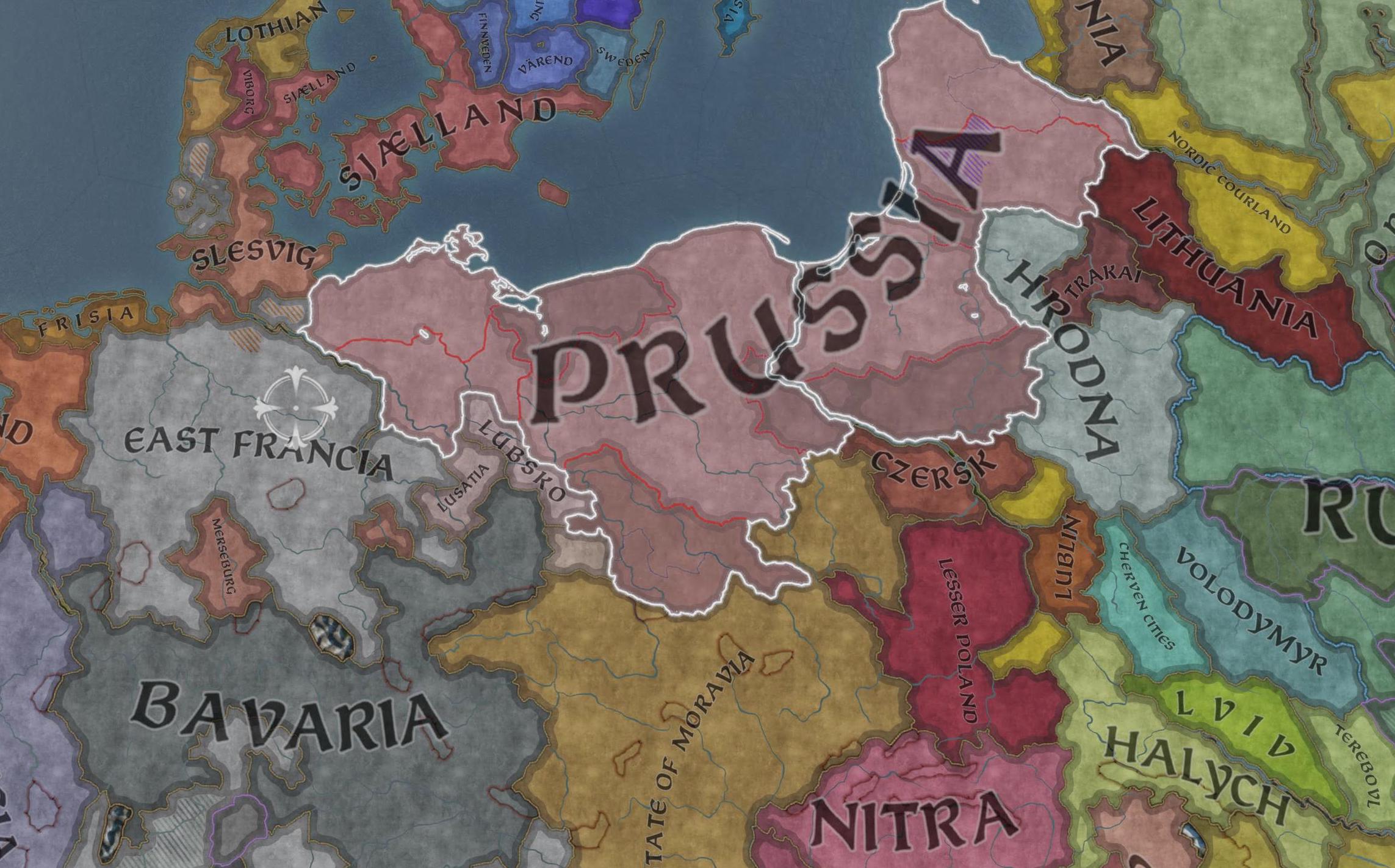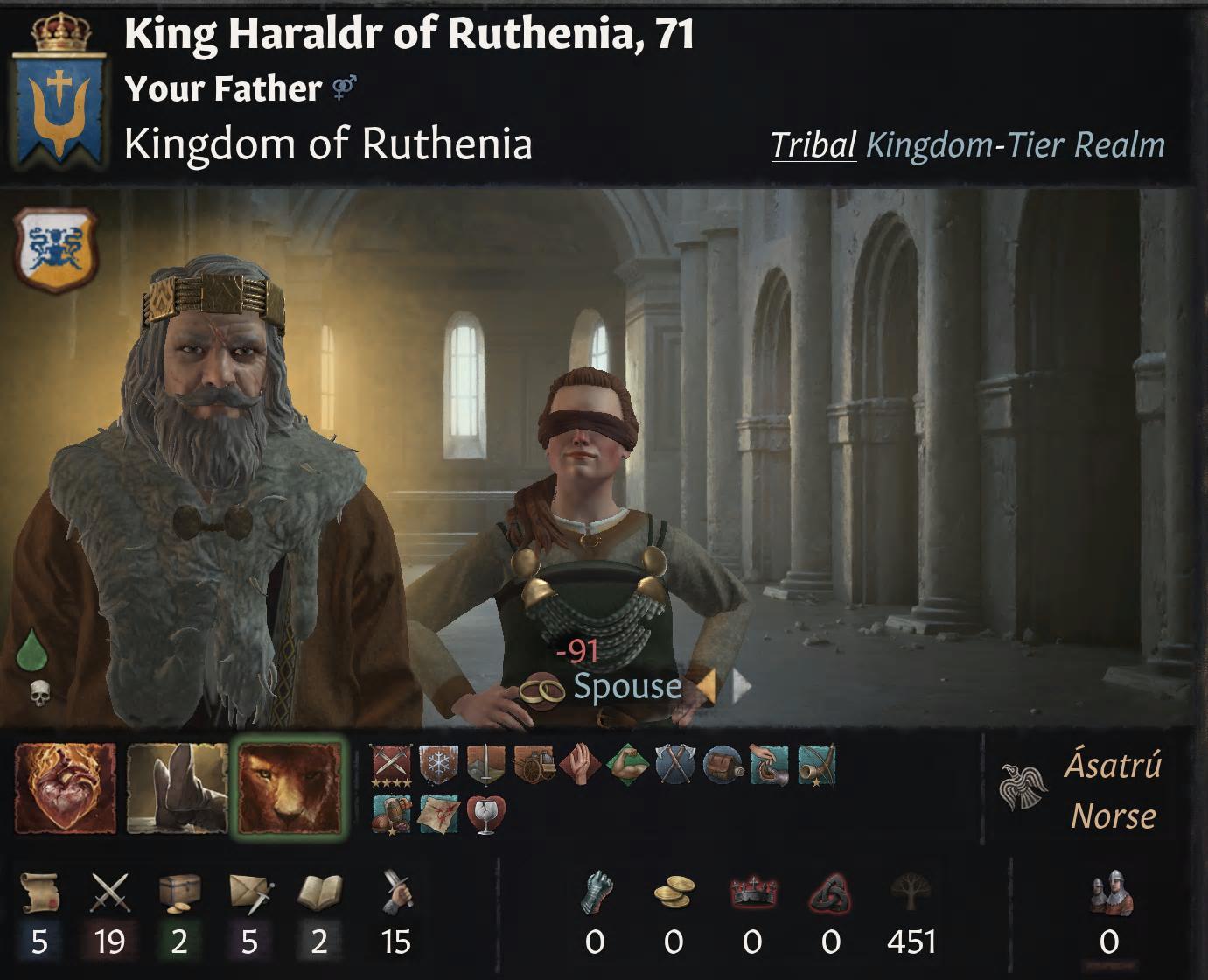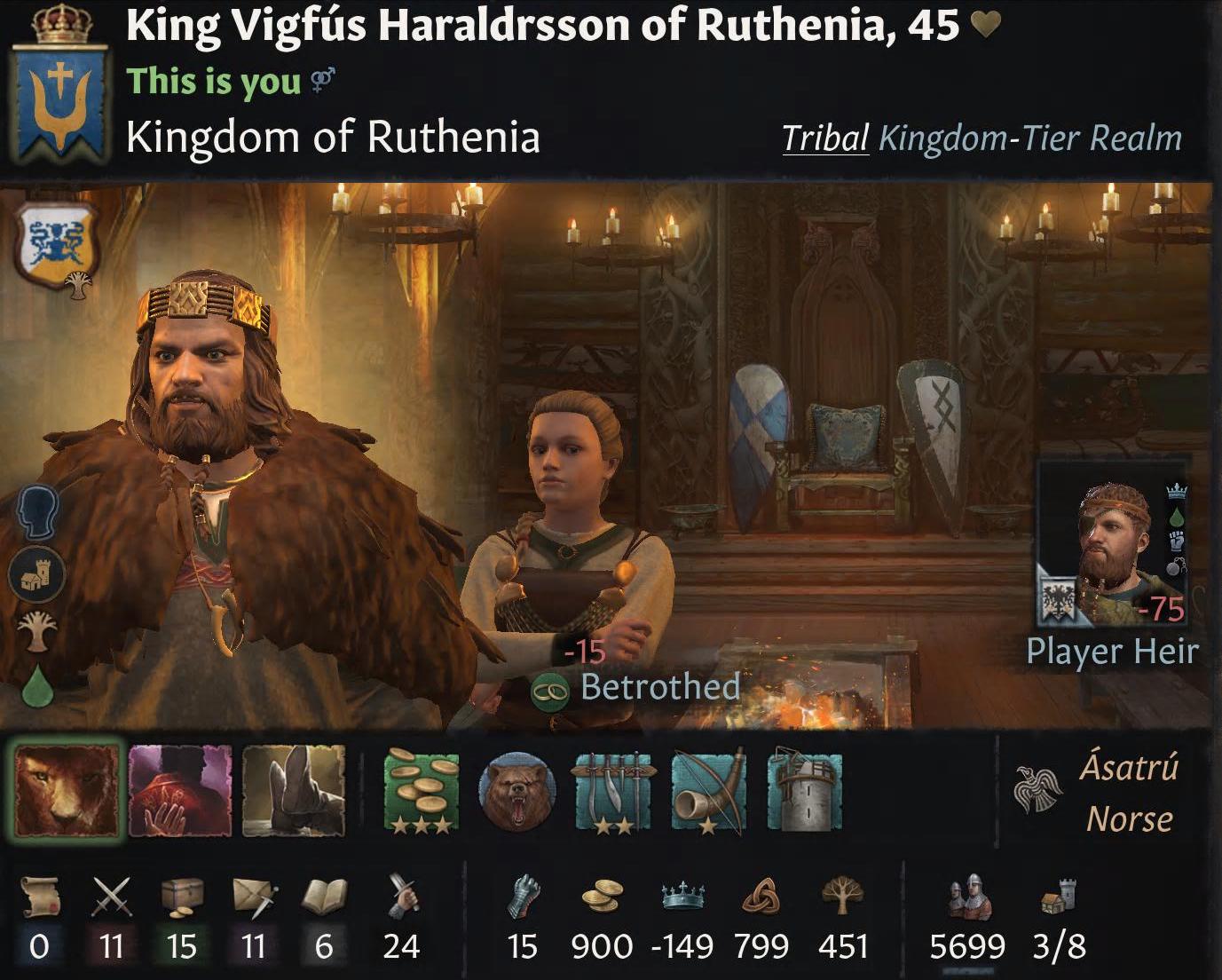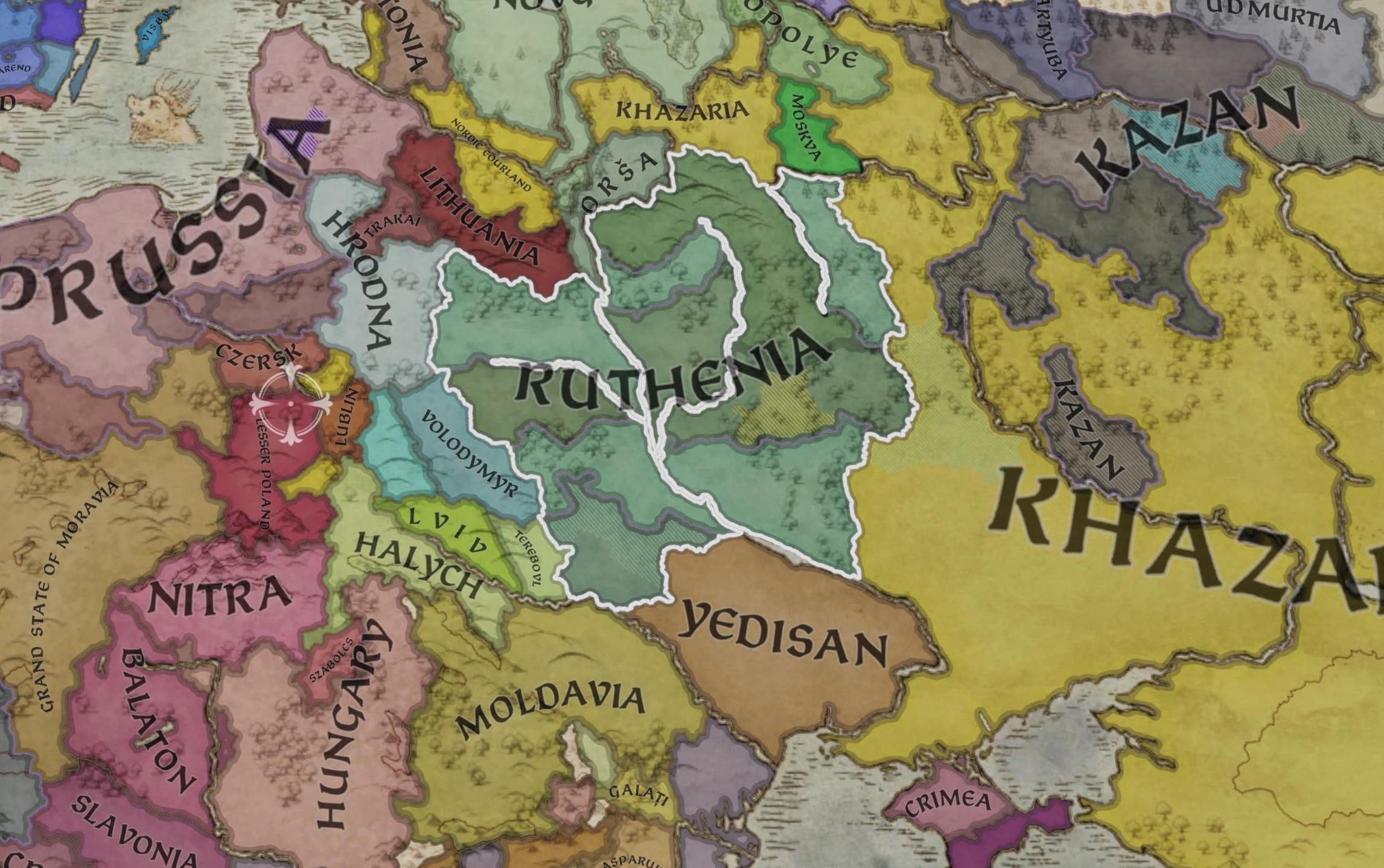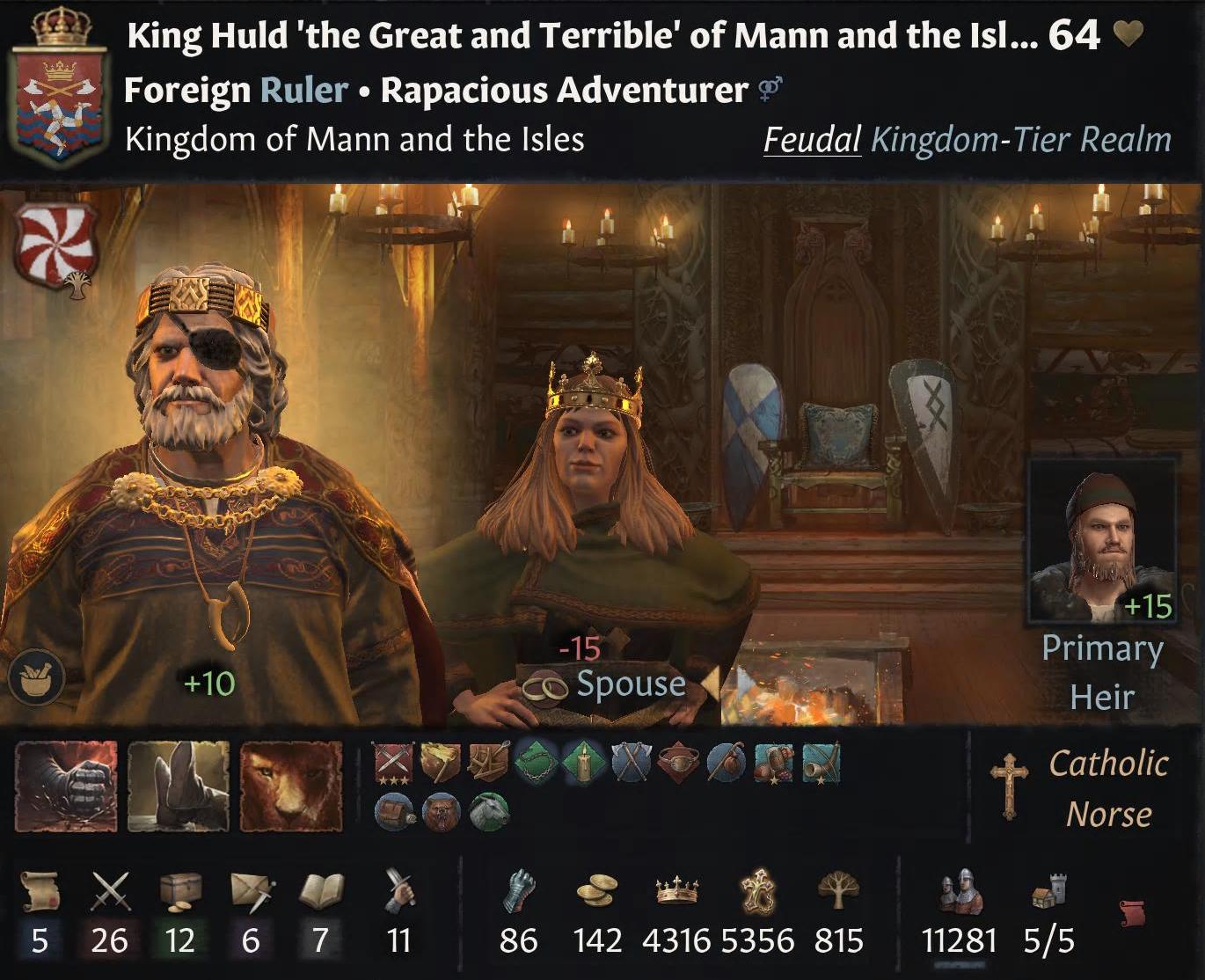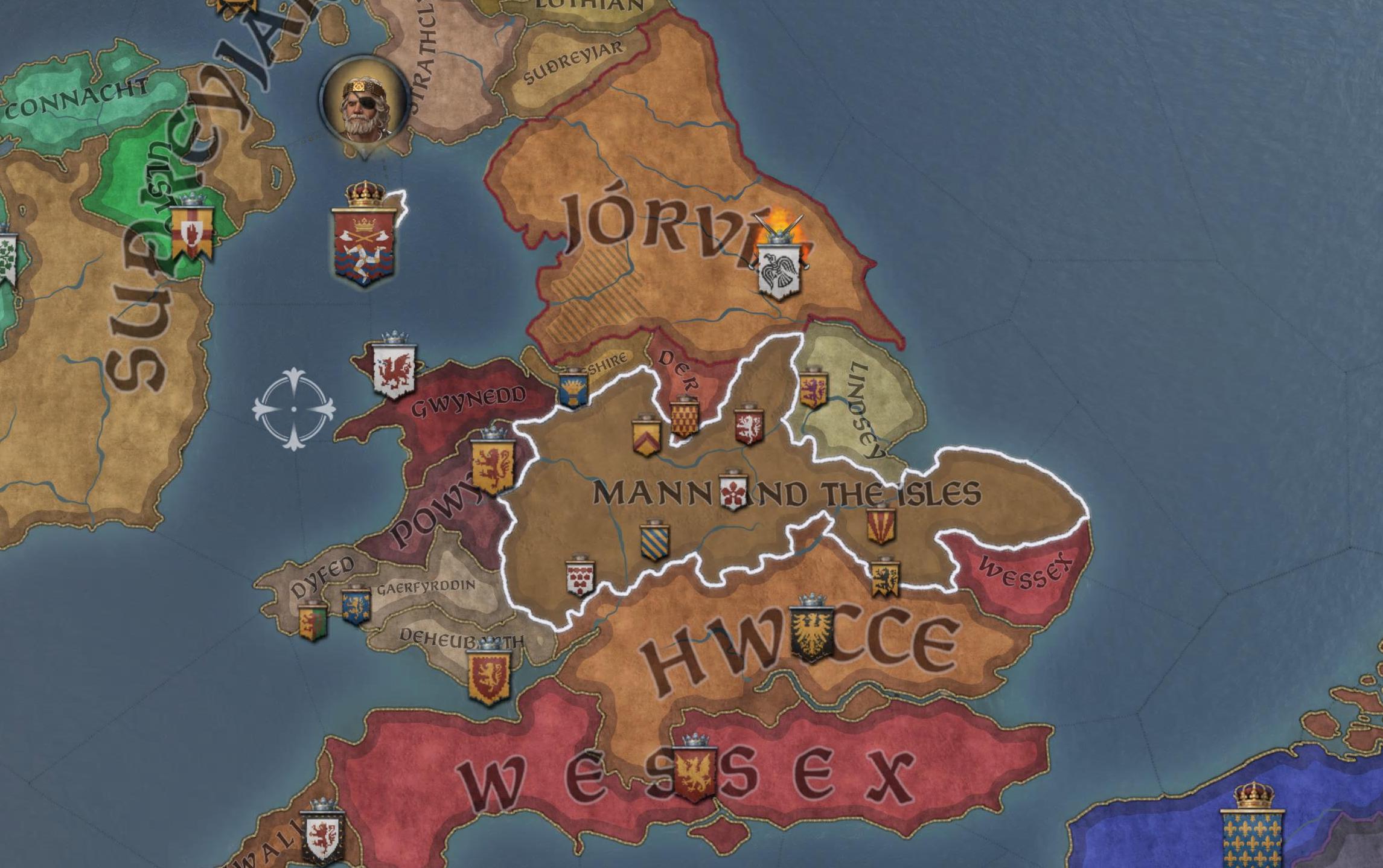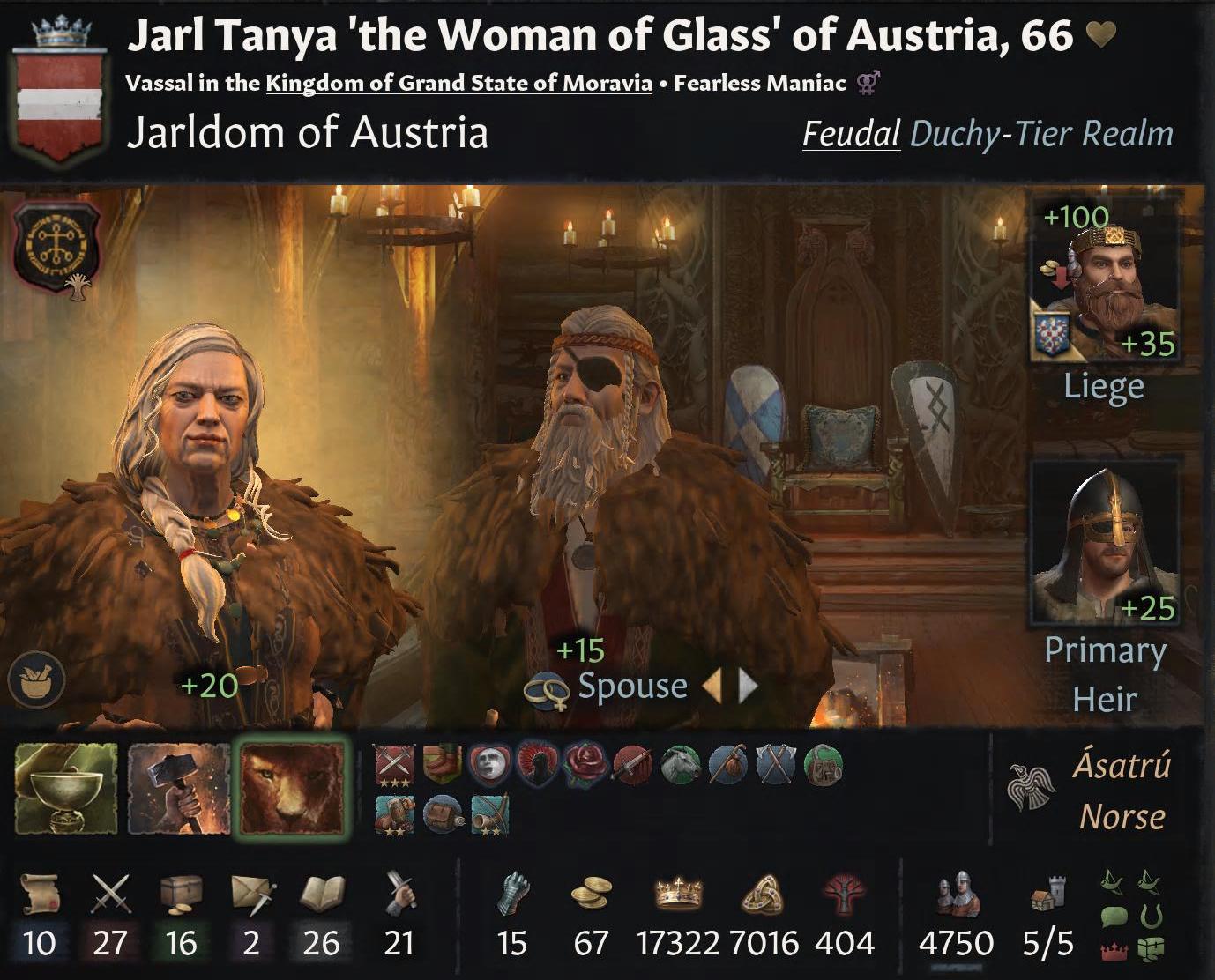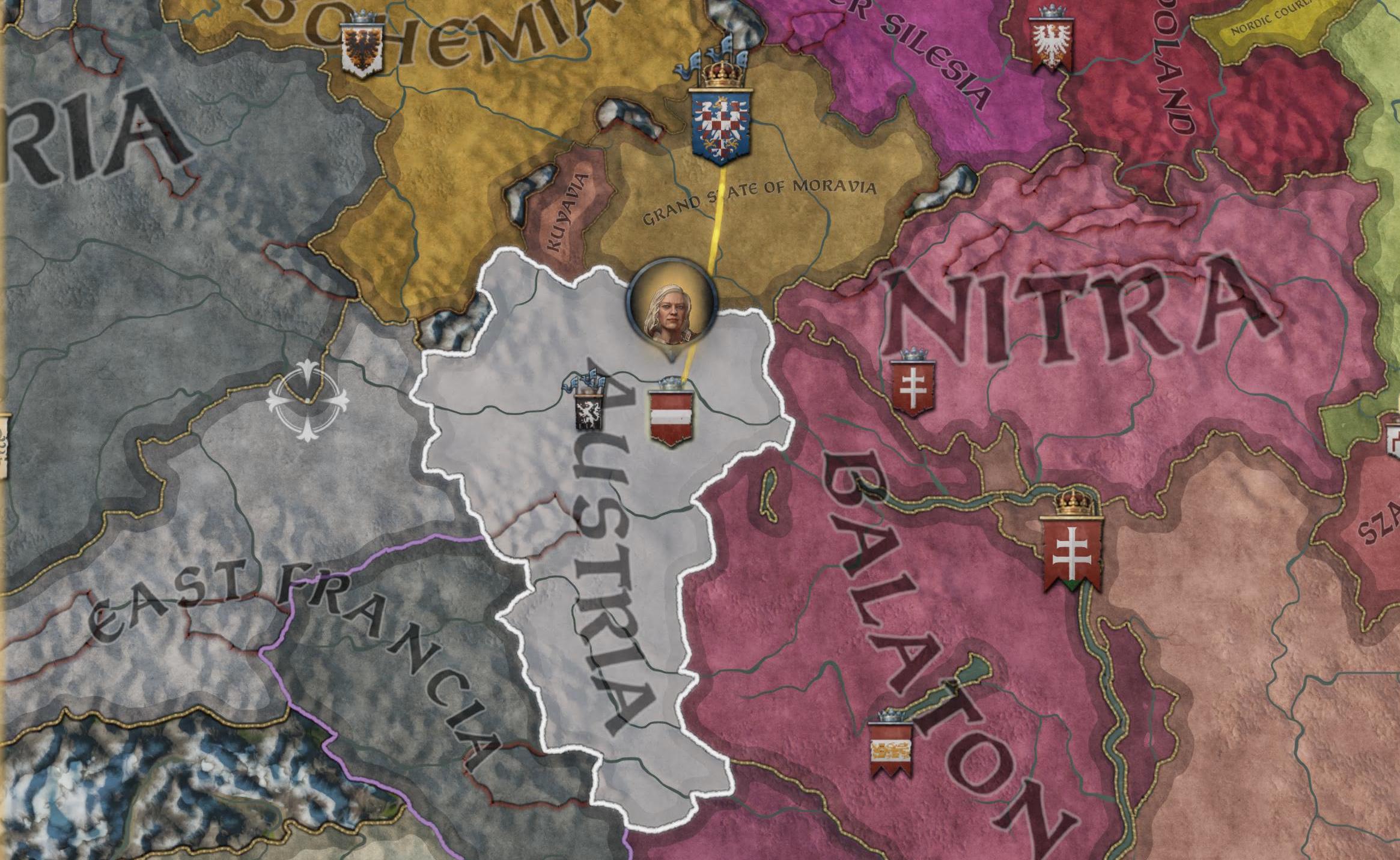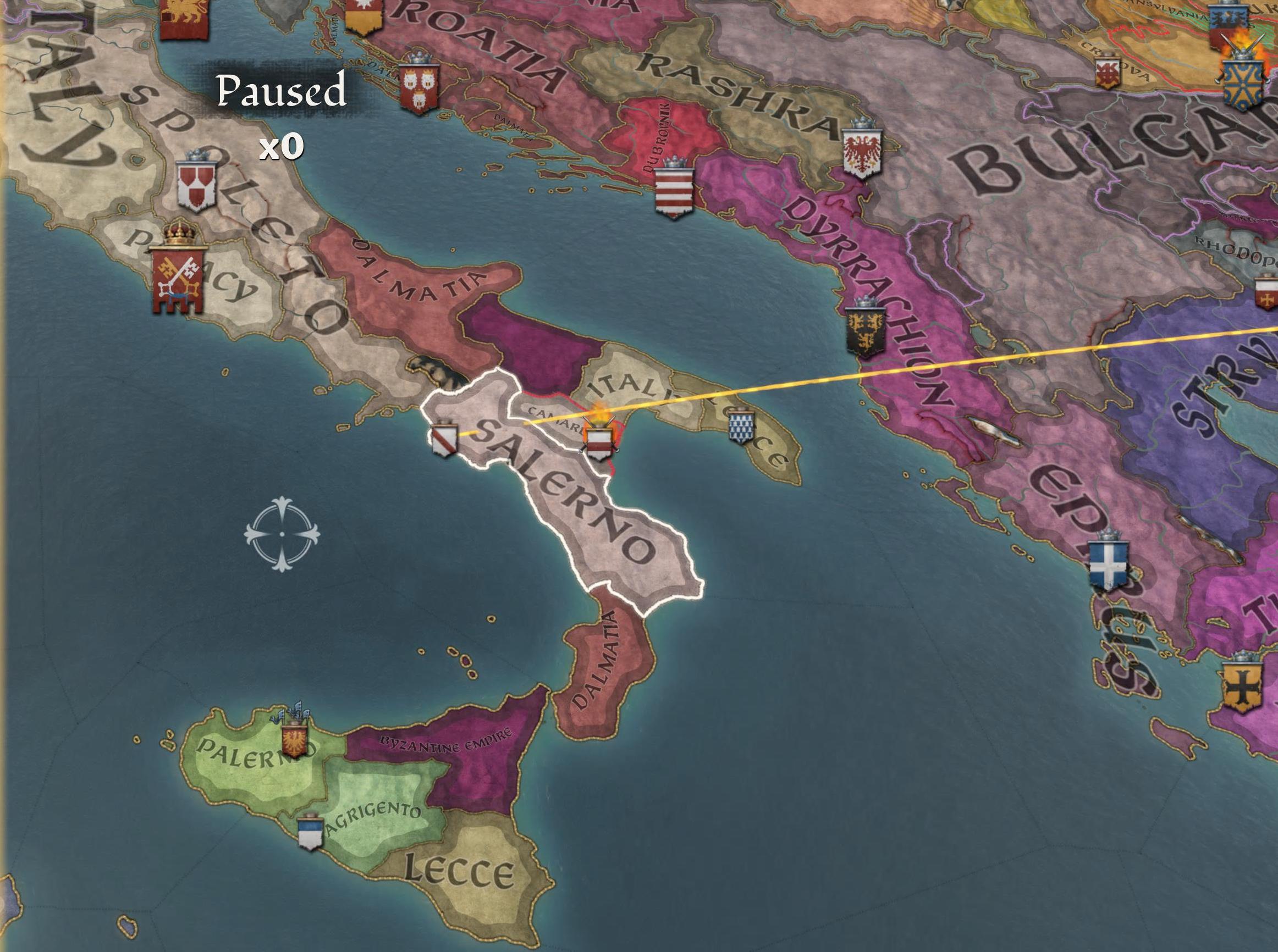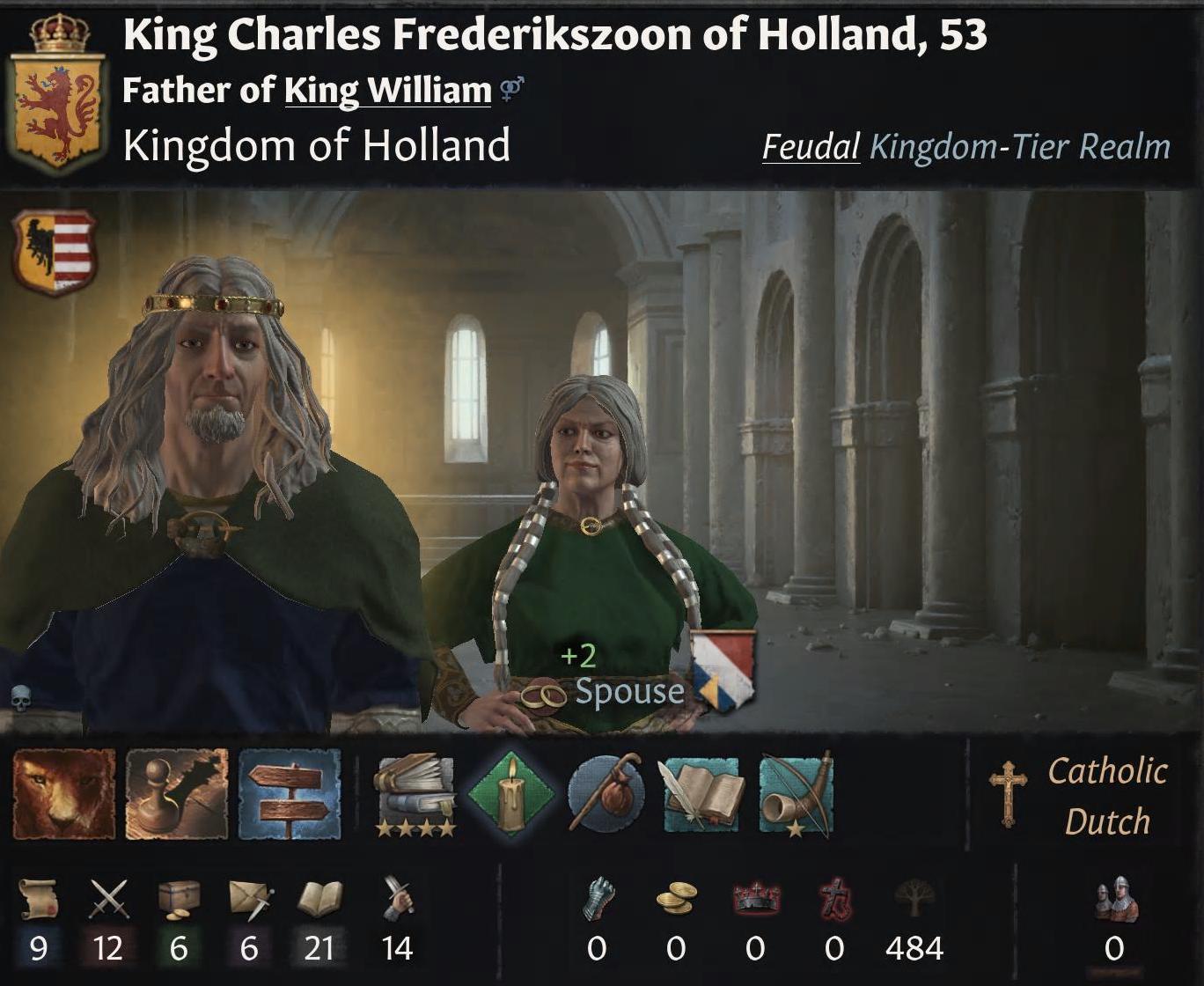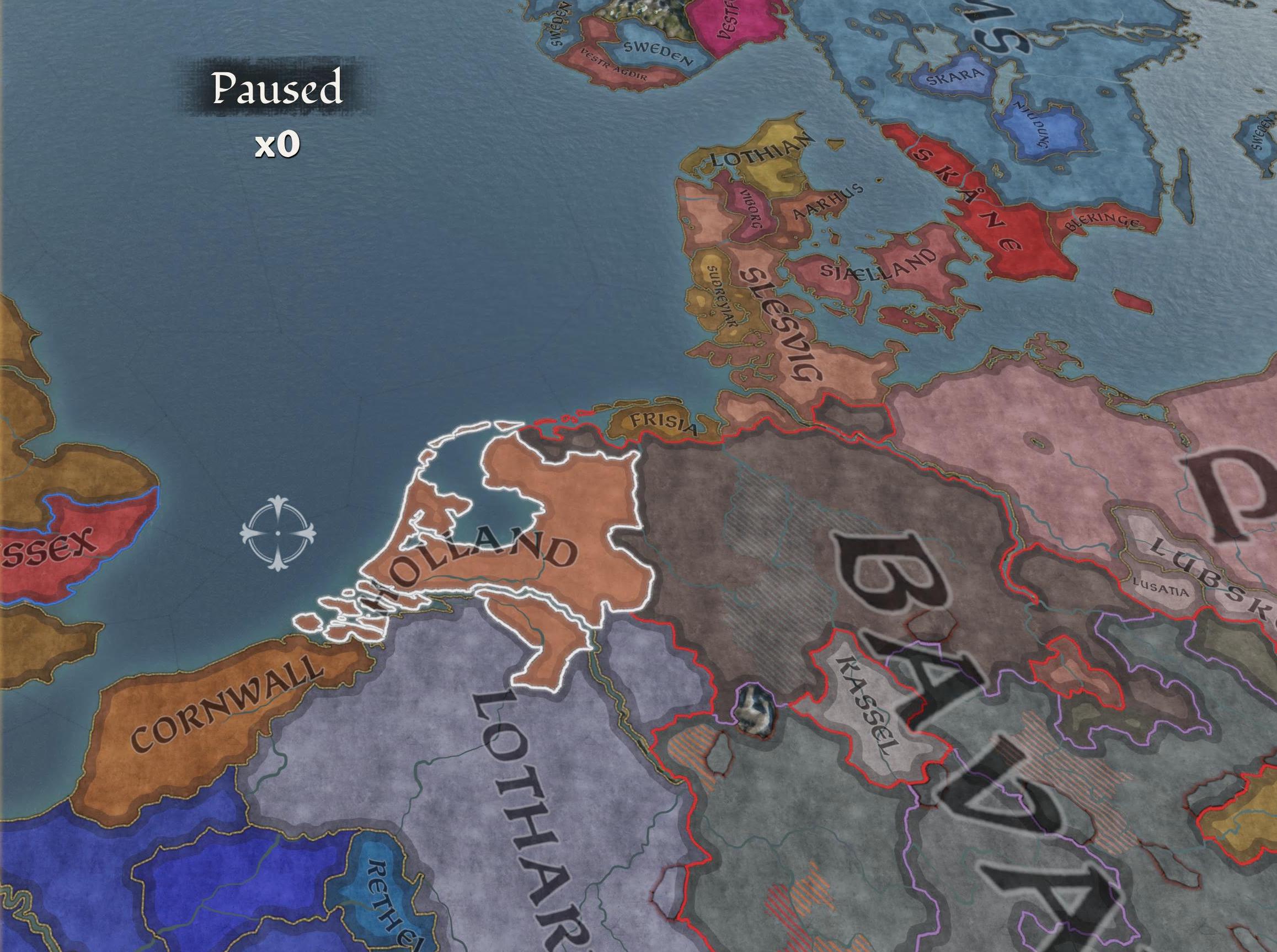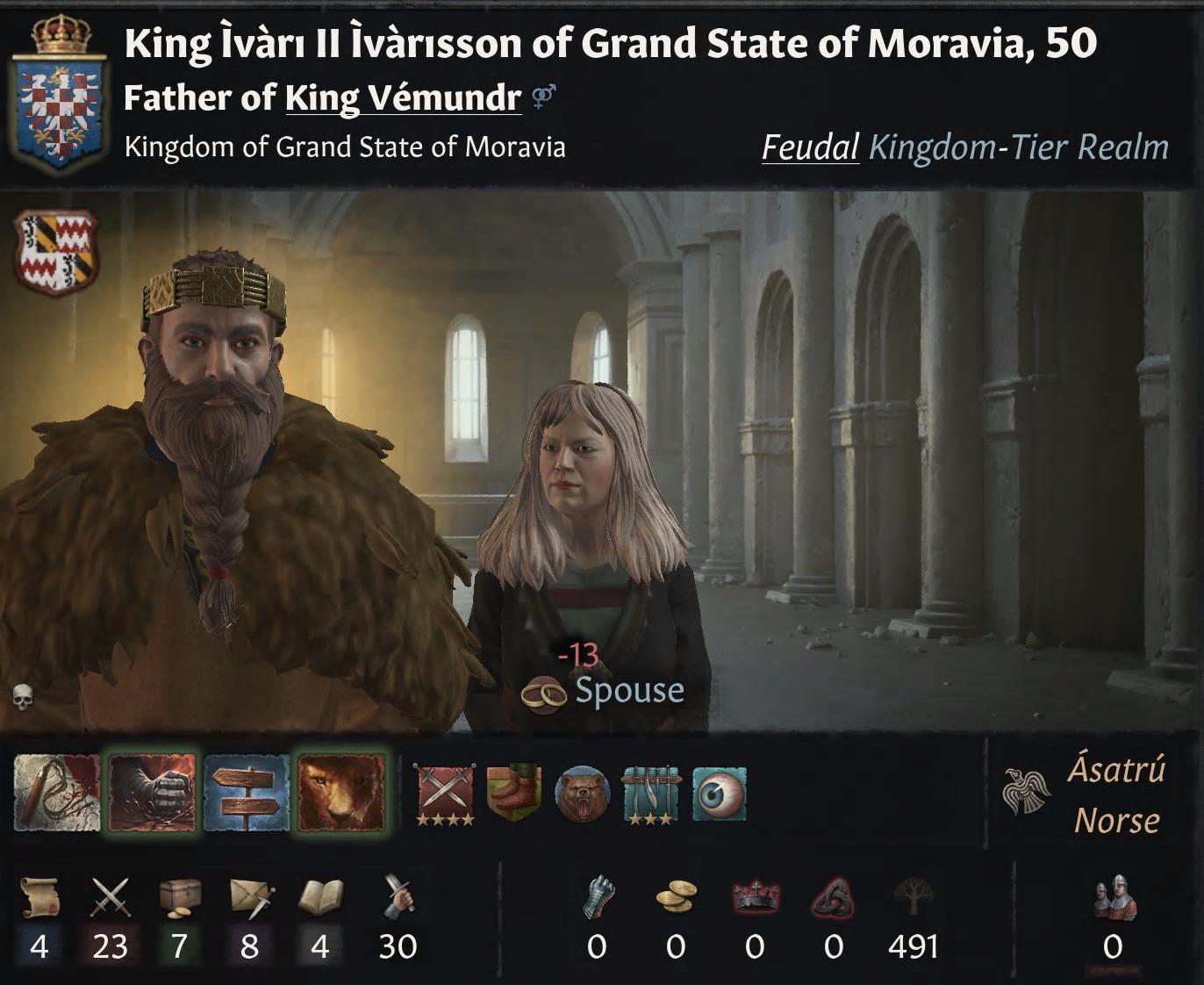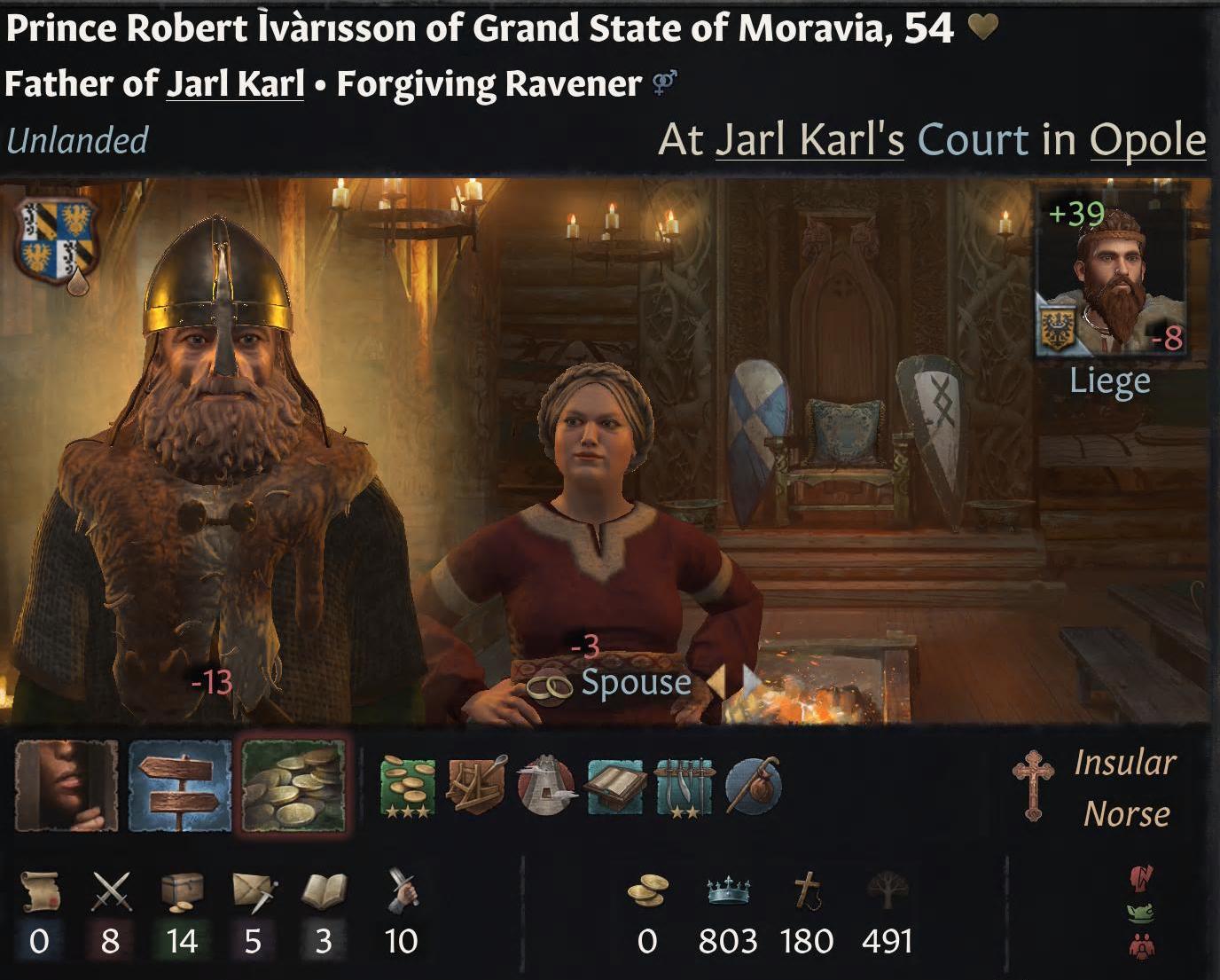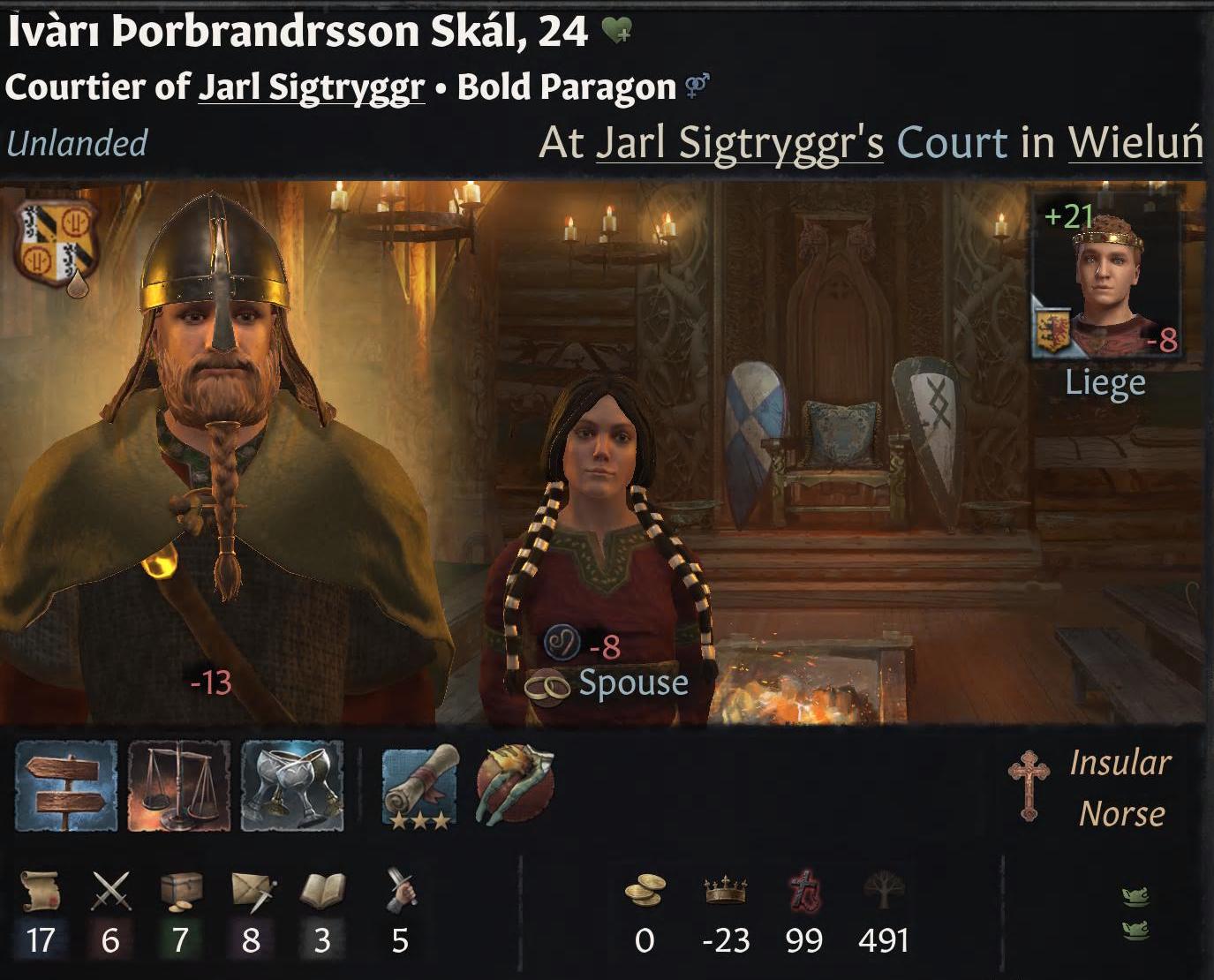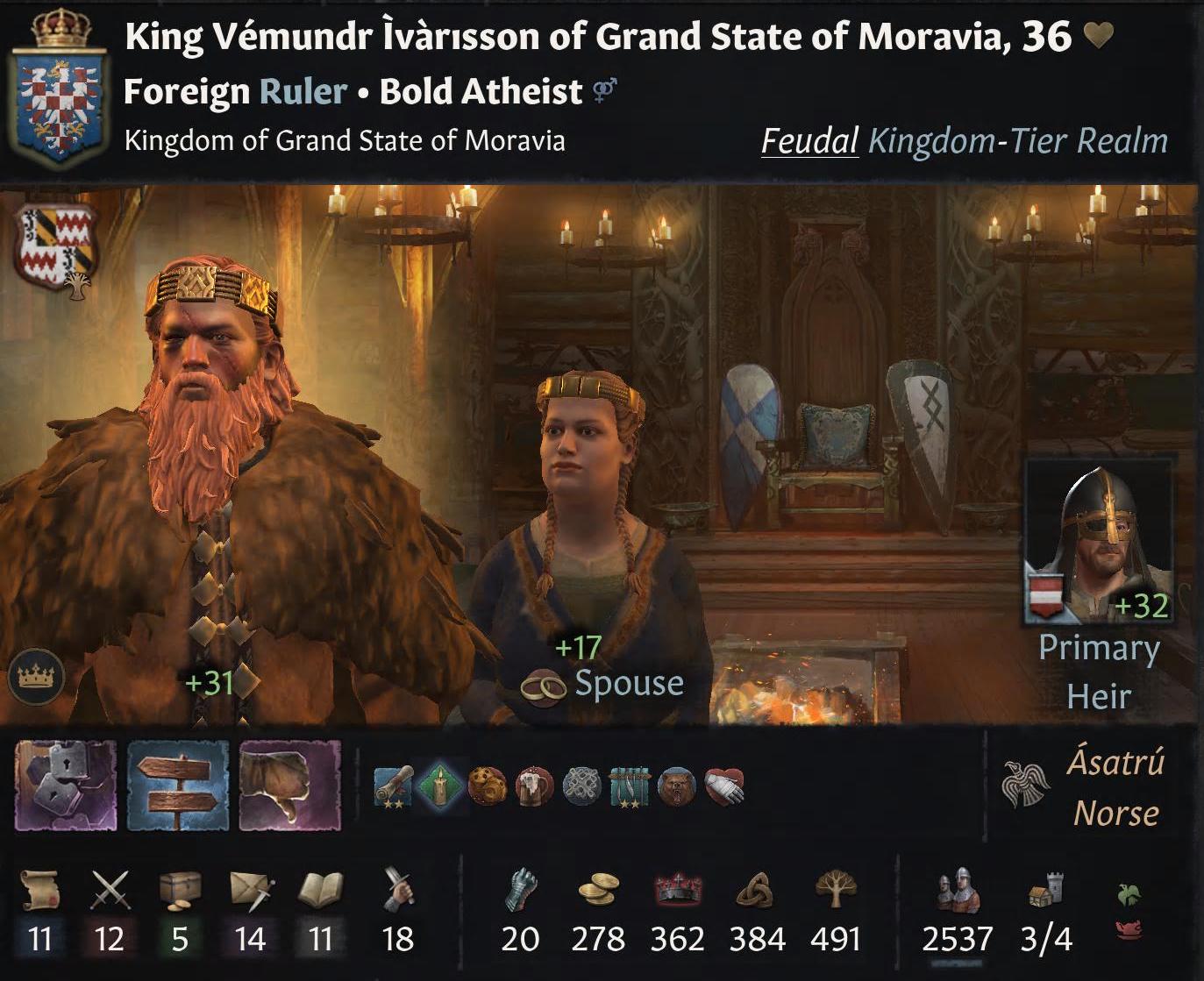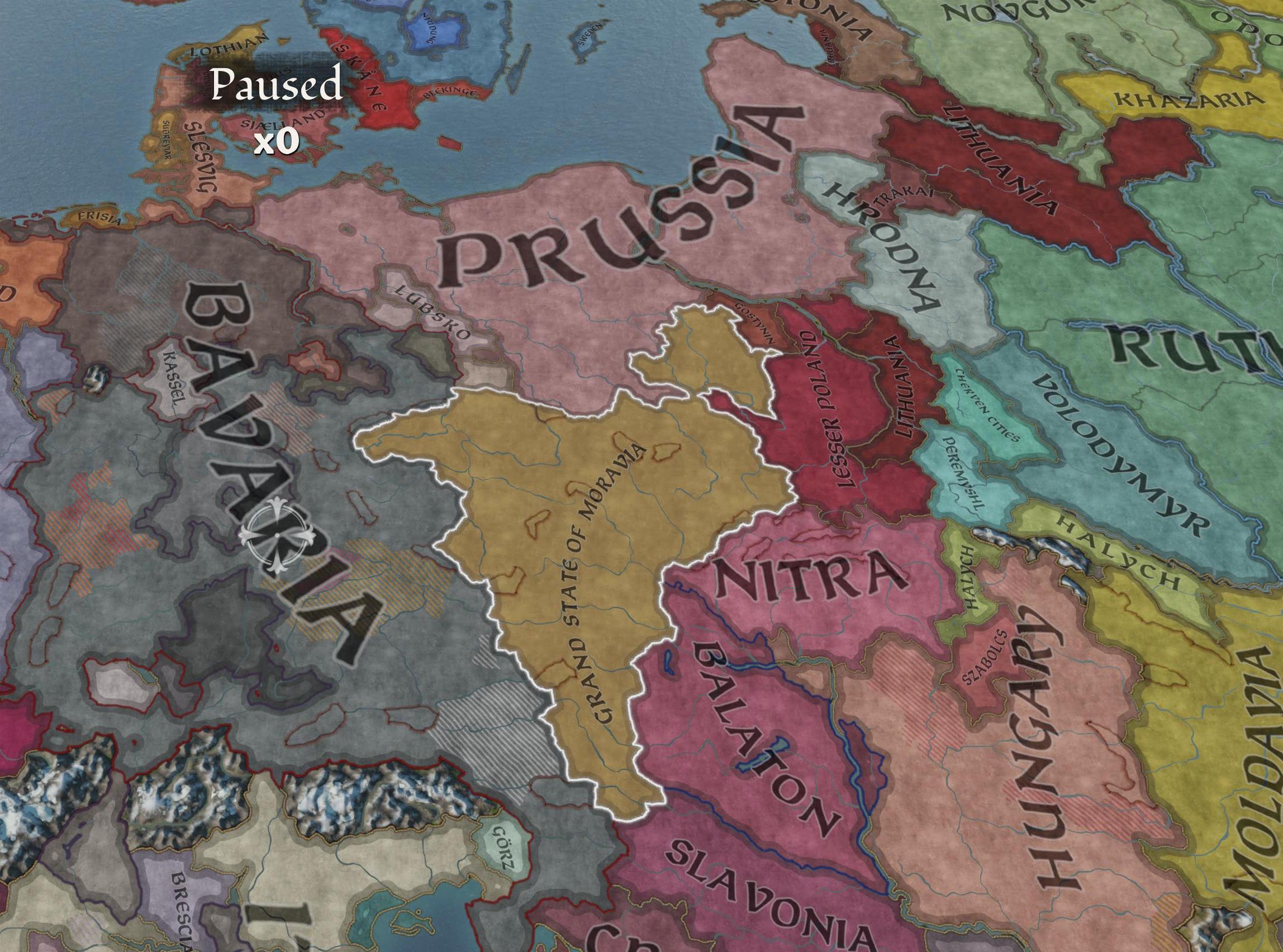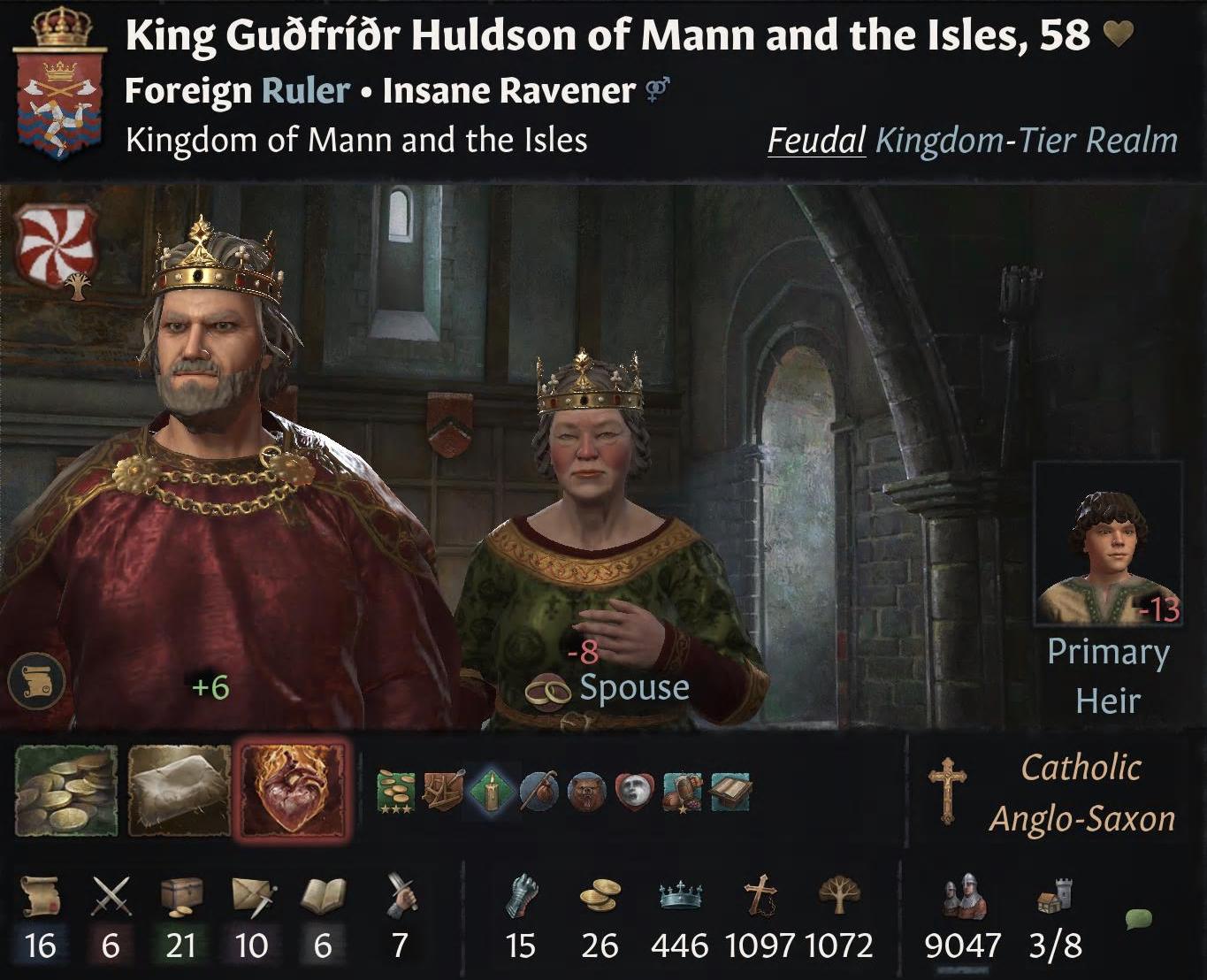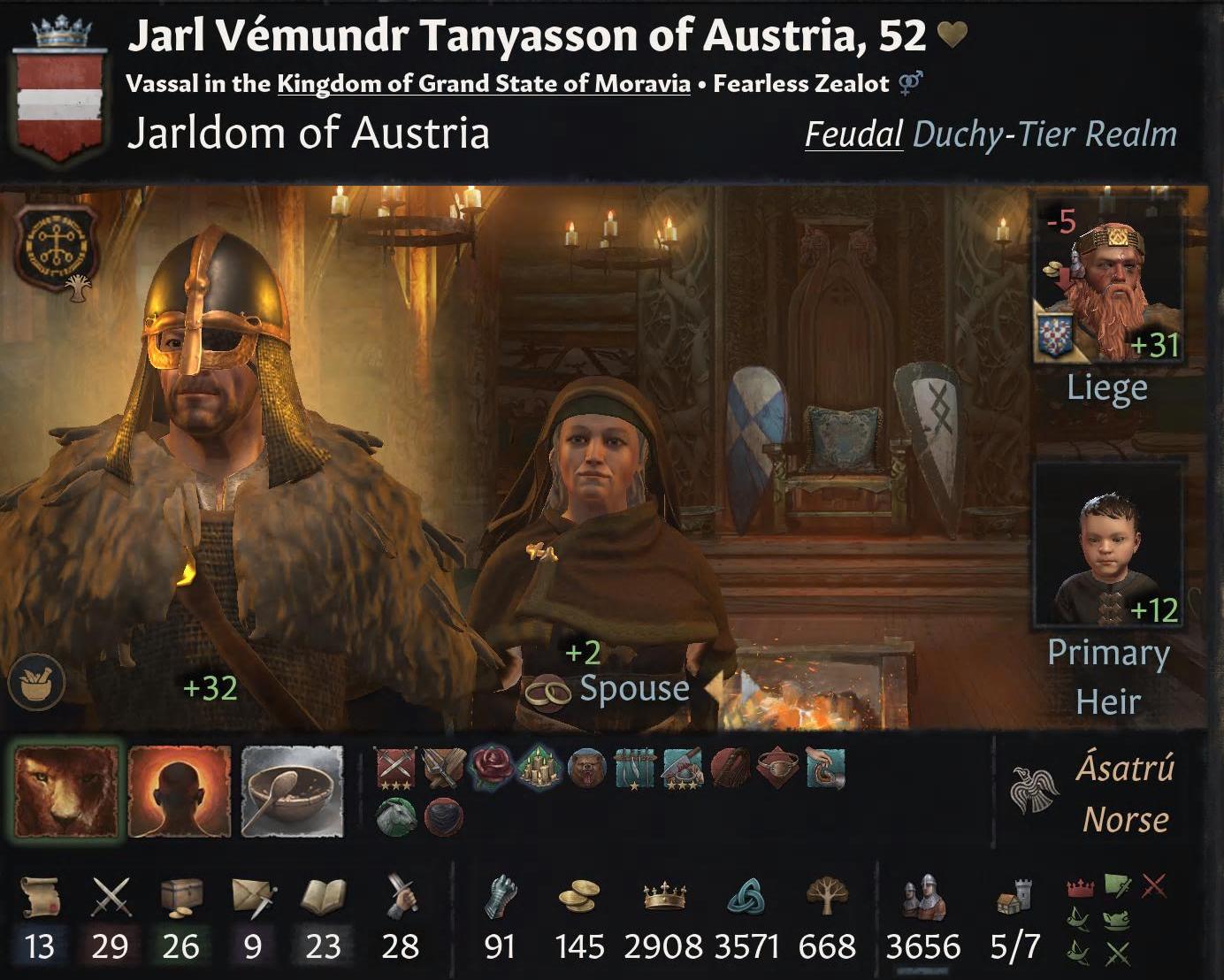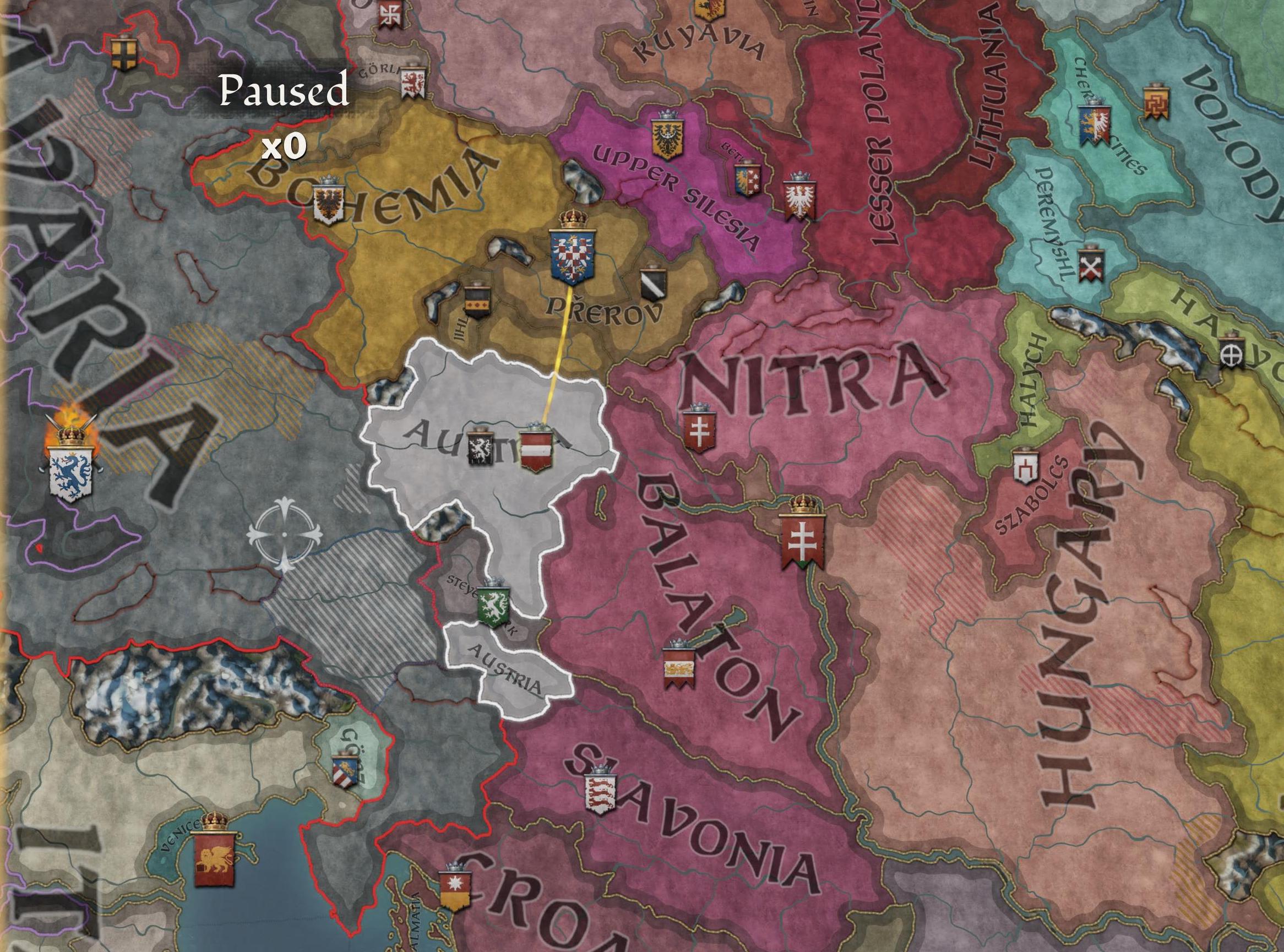Adventures from the North: A Crusader Kings 3 PS5 Multiplayer AAR
Welcome to Adventures of the North: A Crusader Kings 3 Multiplayer AAR. This AAR is the result of a multiplayer session in which myself and several others embarked on a campaign in which we our goal was for each of us to complete a Varangian Adventure and convert to the local culture and faith of our destination within the first three generations of our dynasty. The following account of that session is derived from input provided by the players as well as the actions taken by their characters in-game. As we plan to continue this campaign in future sessions, I expect to update this thread as we progress. If you own the game on PS5 and are interested in potentially joining future campaigns, please let me know as this campaign came about from a newly created multiplayer group for those interested in role-play.
Introduction
For the peoples unfortunate enough to reside along the coasts and riverbanks of Northern and Eastern Europe, the late ninth century was a hellish existence. The vast emptiness of the sea conjured terrifying images of dragonships carrying fierce, hulking warriors. These warriors raided, pillaged, and plundered their way all across the North Atlantic, hailing from the rough, unforgiving terrain of their homeland Scandinavia. The images of dragonships and raiding parties were inevitably seared into the collective psyche of the peoples most subjected to their onslaught; they watched powerless as their treasure was seized, their homes destroyed, and their folk either slaughtered or carried off, never to be seen again. The lords of these lands could do little to protect their subjects, often resorting to bribing the warriors with silver in exchange for peace. Exorbitant bribes of captured nobility sapped the resources of the counts, dukes, and kings entrusted with defending their realms from these great warriors. The sight of dragonships glistening in the sun from the valuables vanishing over the horizon did little to ease the minds of the peoples left with the task of rebuilding their homes and communities, for they knew that soon more would return. Indeed, for these peoples, the late ninth century was a hellish existence.
But for the Norse warriors who braved the North Atlantic, the late ninth century was a time of opportunity and profit. These Norse warriors, known to us in modern times as the Vikings, lived in the cold, cold north of Scandinavia with its rugged coastline and thickly forested interiors. The lack of available farmland and suitable mates in Scandinavia led many free men to leave their homes en masse. Excelling both in sailing and war, the Vikings risked their lives, traveling great distances across vast expanses of ocean to foreign lands that offered abundant lands, riches, and trade for those strong enough to take them by force. They fought with an unmatched zeal for warfare, displaying fearlessness and bravery whenever they met an opponent. To the warrior who met his end on the battlefield, it was believed that a great hall of heroes long past would open its doors and that he would forever be a part of the eternal glory of the gods. The tantalizing prospects offered by this enterprise pulled at the strings of men young and old who yearned for adventure and fame. Together, these Vikings posed a grave threat to whomever they crossed paths with and offered great power to the few rulers who were able to effectively marshal their forces.
It was in this age that saw the rise of several rulers who commanded the loyalty of large Viking armies through fear and admiration. Climbing from the depths of obscurity, these fearless adventurers attracted warriors from across the mainland eager to pledge their lives in exchange for the promise of reward, either in this life or the next. They were able to amass the silver, fame, and warriors necessary to fulfill their ambitions and embark on voyages far from home. Upon arriving at their destinations, the great Viking hordes that flocked to these daring leaders clashed with the inhabitants in fiercely fought contests and gradually wrested control away from the ruling nobility. Leaving behind the ancestral homes of their forefathers, the Vikings who claimed victory abroad also claimed the lands of those defeated and eventually settled them. Conquerors, opportunists, and pursuers of legacy, the legend of these fearless adventures and the tales of their exploits would define the Viking age.
Jarl Fredrik - House van Brunnsholm
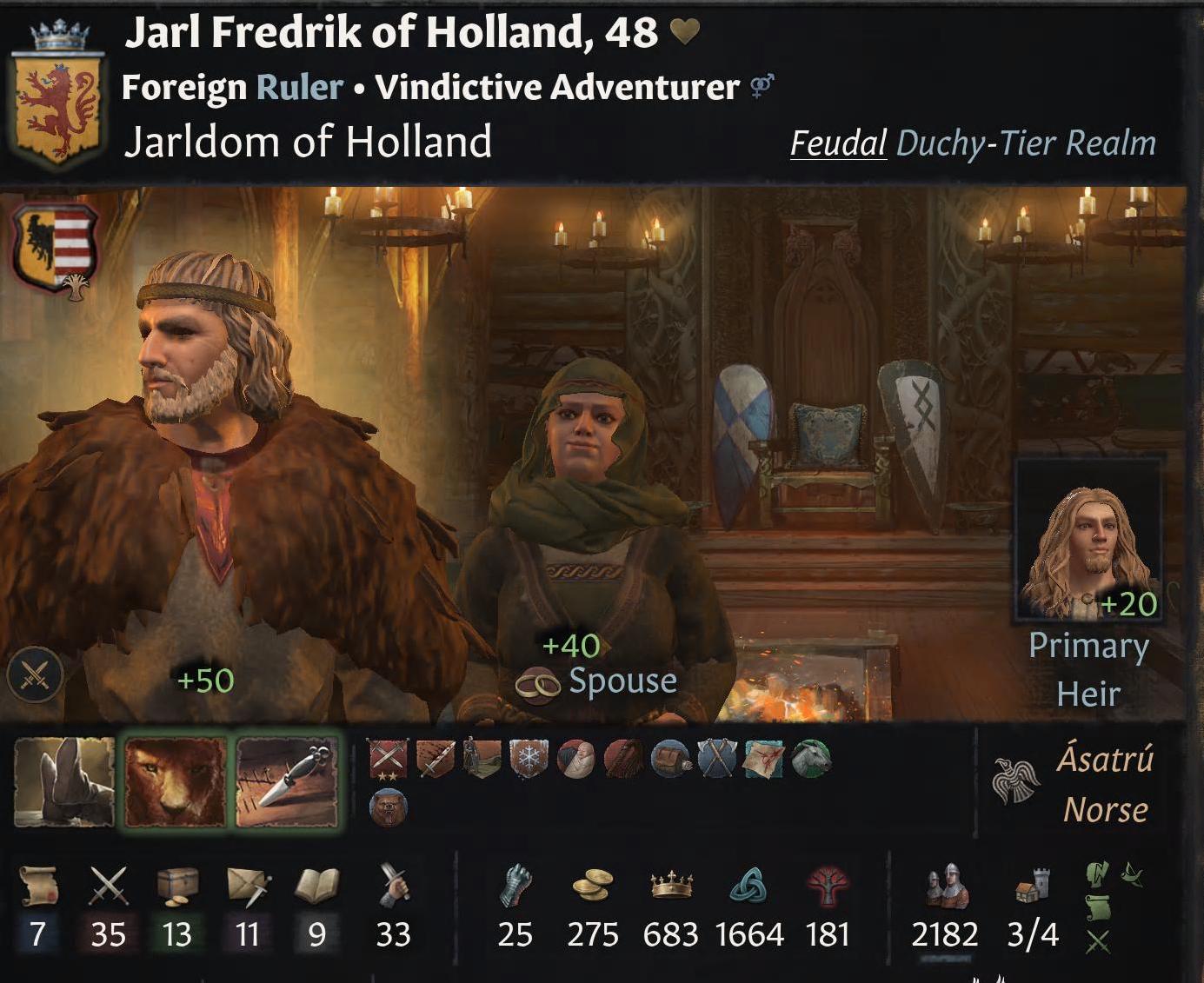

The Low Countries were among the prime targets of Viking raids during the late ninth century. The decline of the Carolingian Empire and its division into several kingdoms significantly weakened the authority of the Frankish kings. As members of the Carolingian dynasty warred with and schemed against each other, defense of the coastline and rivers were often left in the hands of local Dutch nobles. Constant harassment from overseas raiding parties left the local nobility increasingly weakened and vulnerable, with each defeat at the hands of Vikings raiding parties further risking the integrity of the Frankish kings' grip over the region. Over time, the nature of these incursions evolved from raiding to settlement and colonization. While the Vikings were unable to establish major settlements in the Low Counties up to this point, that would soon change upon the arrival of one man.

Fredrick I, founder of House van Brunnsholm, is believed to have been the Jarl of Västergötland before his arrival to Holland in 874 CE. In the peace treaty signed between Fredrick and the Frankish king Lothaire II, Fredrick is addressed as Jarl of Västergötland in addition to being recognized as the rightful ruler of Holland. Historians generally cite the main reason for this agreement being to dissuade the Frankish king Charles the Bald from invading Lotharingia with Lothaire's forces preoccupied in Holland. The treaty also called for a mutual cessation of hostilities, in effect allowing the Viking settlement to act as a bulwark from future Viking raids. For Fredrick, the agreement validated his rule and gave ample time for Fredrick to consolidate his position. Whatever the case, Fredrik proclaimed himself the Jarl of Holland and commissioned the creation of a runestone in Holland. The runestone is dedicated to Fredrik's victory over Lothaire and stands today as a symbol of the van Brunnsholm dynasty's longstanding reign in the Low Lands.
Jarl Ivàri - House BłackHàrt
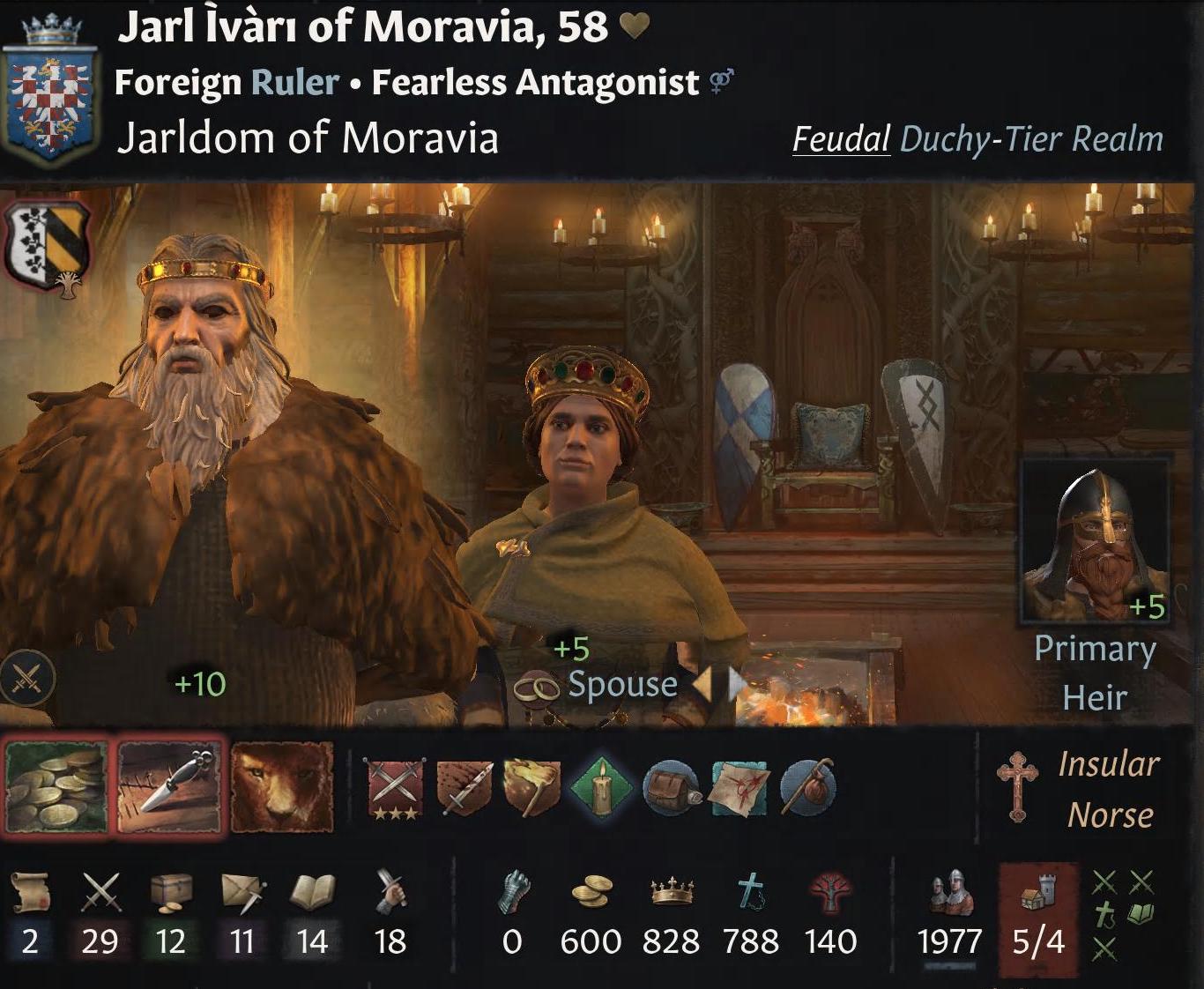

The Viking occupation and eventual settlement of Moravia dates back to the mid-870s CE when Ivàri I BłackHàrt defeated King Svatopluk in the Battle of Přerov. Various sagas attest to Ivàri arriving to the slovien lands he would later rule at the behest of his father-in-law Count Werner of Klingenberg. The most popular account tells of Ivàri traveling from his lands along the southwestern coast of Norway down and around the coast of Denmark and northern Germany, eventually sailing up the Rhine. With a large raiding party in tow, Ivàri pillaged the countryside until he drew the attention of Werner's army. To Werner's surprise, a messenger arrived at Werner's camp with Ivàri's offer of negotiation. Upon their meeting, Werner was further surprised to learn that Ivàri had been baptized while out on a raid in the British Isles. It was then Ivàri who was taken off guard when Werner offered his daughter Wulhilde's hand in marriage as well as a proposal: the two men would join their forces and march west to the Kingdom of Moravia.

The arrival of Ivàri and Werner's armies in Moravia sparked three years of bloodshed between their forces and those of King Rostislav and his successor King Svatopluk. Rostislav left the throne to his son Svatopluk after he suffered a fatal injury in battle, although the site of this battle is unmentioned in the surviving accounts. Svatopluk proved a worthy adversary to the combined forces of Ivàri and Werner, who managed to avoid any decisive battle for several years, which severely drained the supplies and energy of his opponents' armies. However, this strategy came to an end at the Battle of Přerov, where the King was handedly defeated by the superior commander Ivàri. Svatopluk was forced to resign himself south to Nitra, where he would later die from gout. The Znojmo runestone commemorates the ascension of Ivàri to Jarl of Moravia and later conquests would see the expansion of his realm into neighboring Bohemia and Upper Silesia and the elevation of his house in the slovien lands.
Jarl Aslak - House Stórr
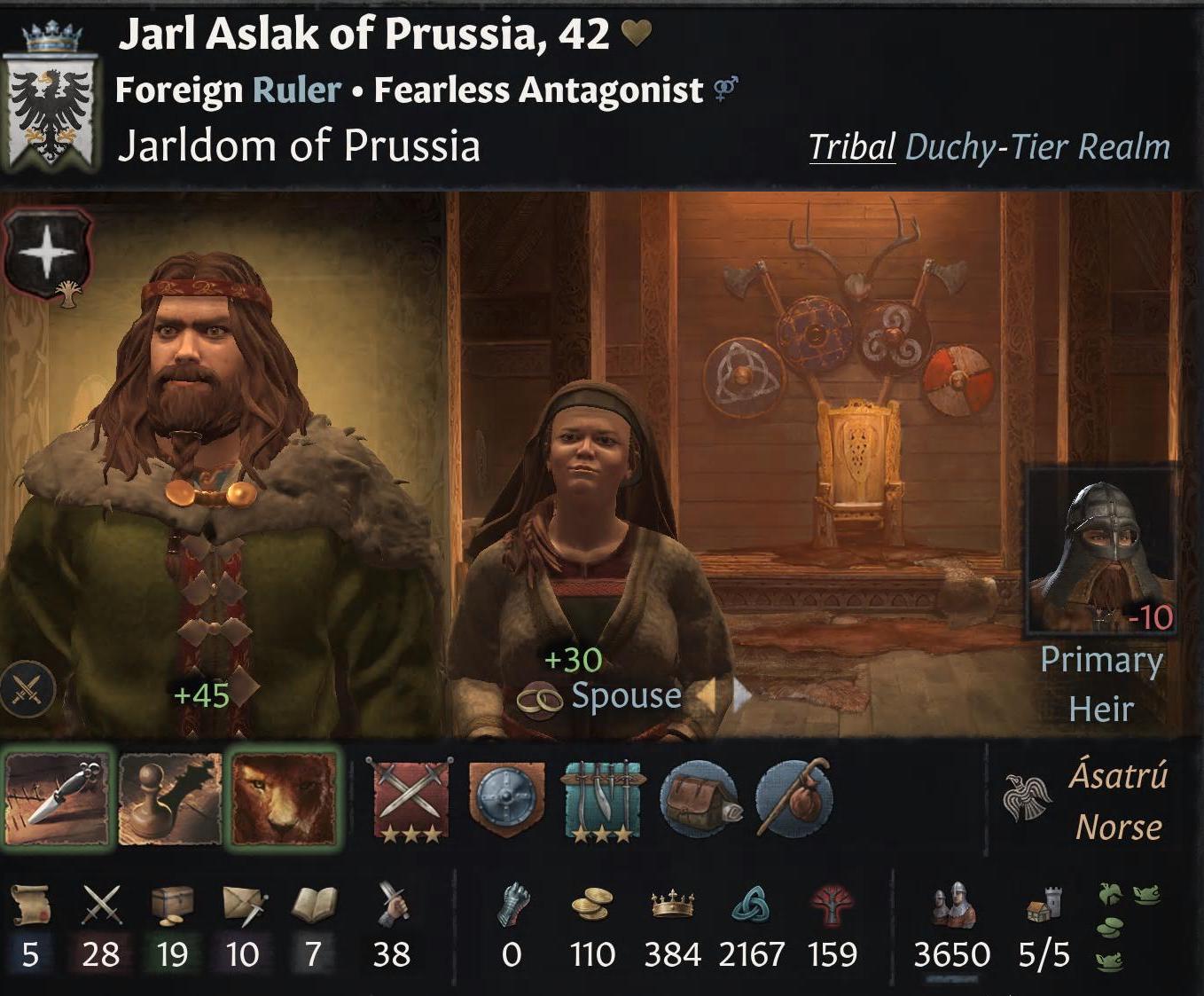

Like his contemporaries, Aslak I was a Scandinavian ruler departed from his homeland in pursuit of silver, land, and fame. It is believed that Aslak ruled as Jarl of Hålogaland and parts of the Northern Isles before he and his army sailed down the coast of Norway, through the Danish Straits and into the Baltic Sea sometime in the late 870s CE. While the exact details of Aslan's conquest over the Prussian lands are unknown, a runestone raised in Warmia, on the southern shore of the Gulf of Gdańsk, attest to the defeat of the Prussian forces by Aslak's army and subsequent settlement of Scandinavians in the region. This settlement extended further inland on both sides of the Vistula river, from the coasts of Pomerania to as far as Lithuania, encompassing not only Prussian but Pomeranian and Polish lands. Interestingly, the Warmia runestone refers to Aslak as High King of the Baltic Sea, leading some scholars to believe that the Jarl sought to unite the Slavic and Baltic lands as a singular political entity. Aslak's dream of a unified region would become the rallying cry of his lineage and of House Stórr for future generations.

Jarl Haraldr - House af Gotland
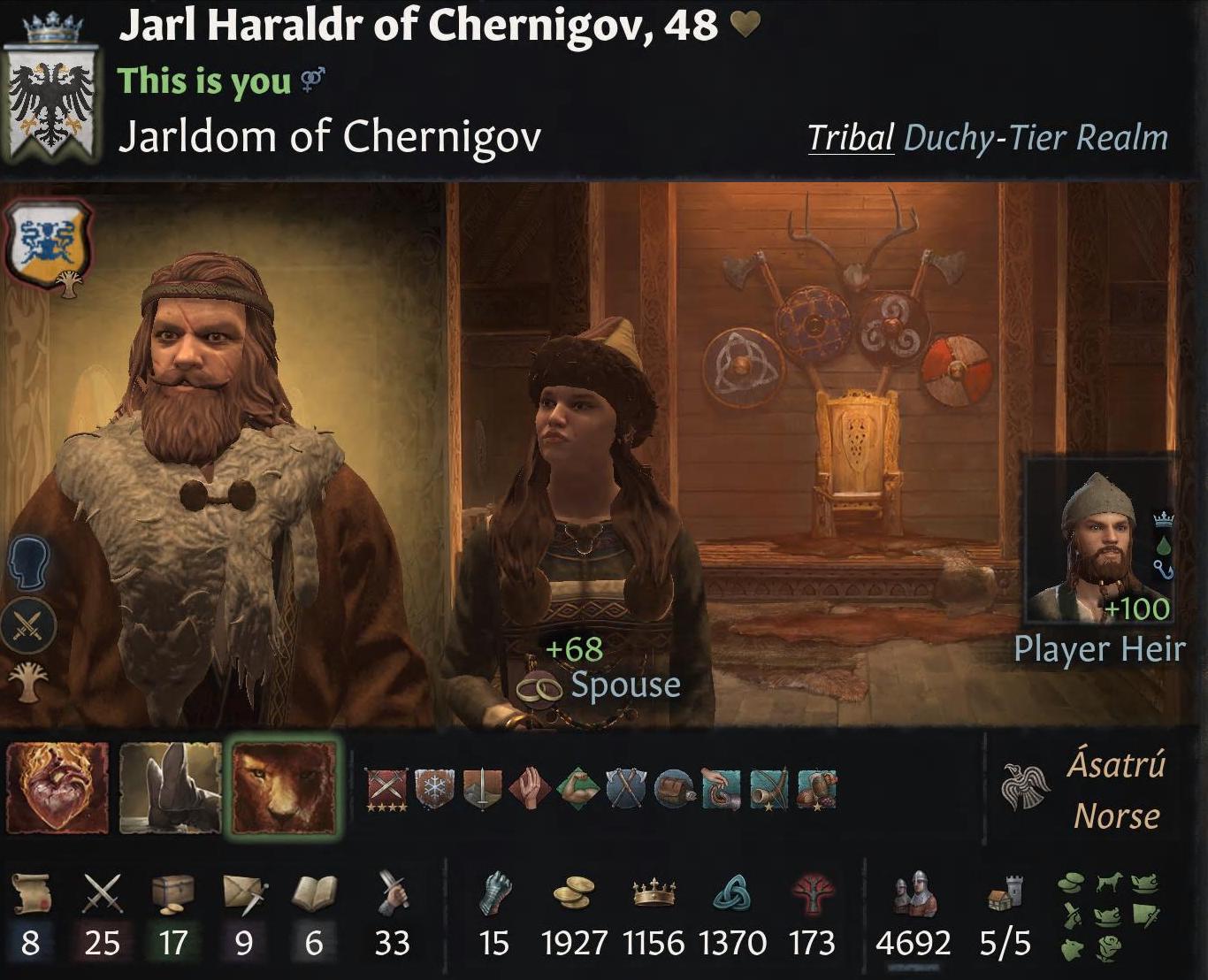

Haraldr I first rose to prominence as the Jarl of Visby, a settlement on the island of Gotland built around the trade routes of the Baltic Sea. His early life is unknown, but much is known regarding his exploits in the Baltic Sea and along the major waterways of Eastern Europe. The poet Dryi, believed to have served in Haraldr's court in the late ninth century, composed several verses detailing Haraldr's raids in the Black Sea and eventual settlement along the Desna river. Dryi attests to Haraldr's contact and eventual alliances with the High Chieftains Ruslan Ruslanovich of Polotsk and Dyre of Kiev. With their help, Haraldr was able to seize control of Chernigov without fighting a single battle, extending his realm as far east as Kursk before settling for peace with Khazar Manasseh II of the Khazaria Khaganate. The verses of Dryi coupled with a runestone raised in Chernigov tell the story of how Haraldr's wife Predslava, sister to Ruslan, was abducted by Jarl of Östergötland and forced to serve as his concubine. The pair were reunited in Chernigov, but not before Predslava bore the late Jarl a son. The young Jarl agreed to return his mother Predslava to Haraldr in exchange for his arms should Haraldr be called upon. Haraldr agreed on the condition that when the Jarl of Östergötland came of age, he would stand ready to lead his armies into battle should Haraldr ever need it. With strong alliances bound by the oaths of marriage, Haraldr was able to establish Chernigov as an independent realm and himself as Jarl of the East Slavs.

Jarl Huld - House Vaeni
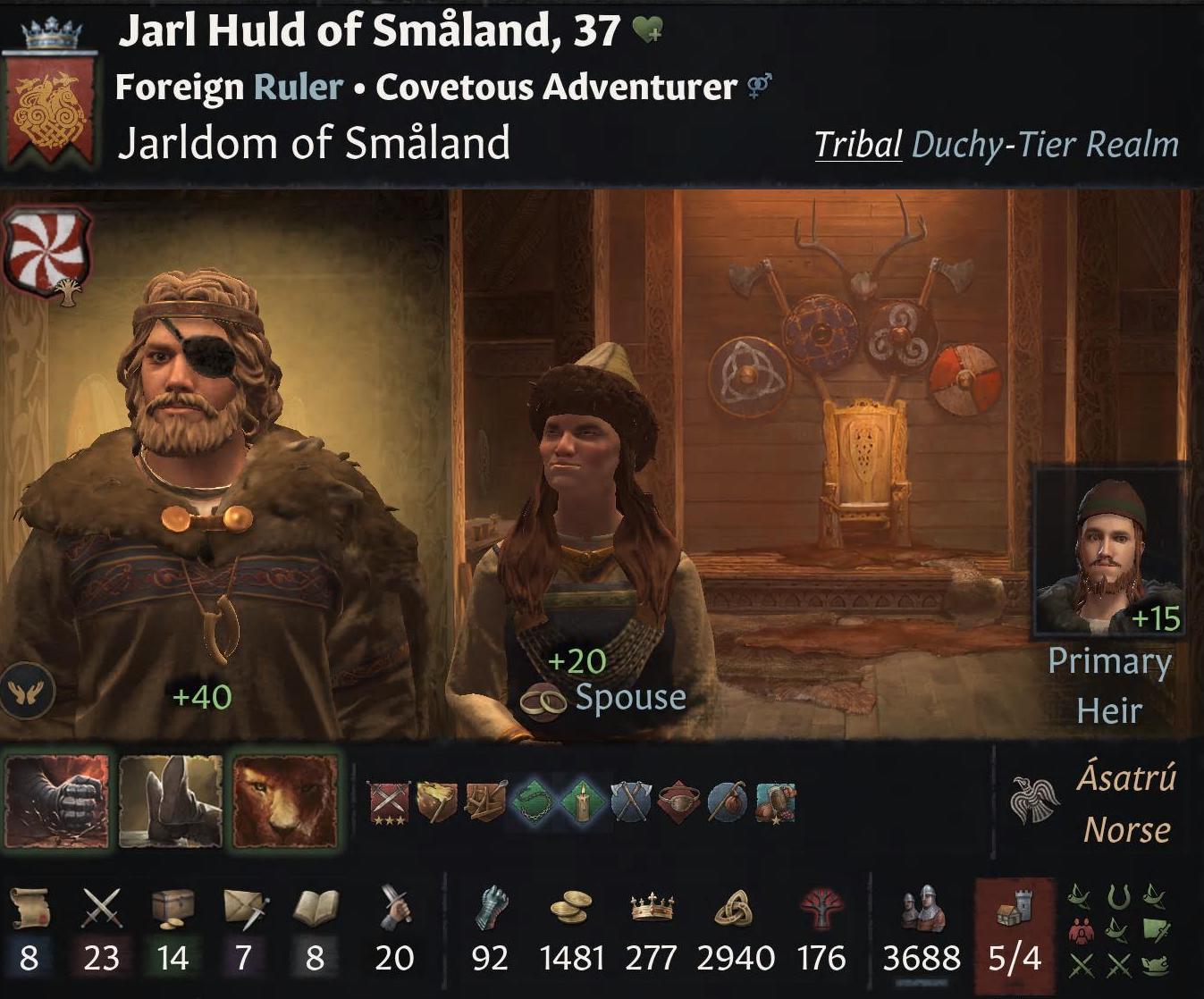

While opportunity overseas called to the conquerors Fredrik, Ivàri, Aslak, and Haraldr, the void left in their wake left gave rise to opportunists back home. Huld I was one such opportunist. The Jarl of Småland incorporated the lands of his former neighbors Fredrik and Haraldr into his realm, adding to his domain the vacated lands of Västergötland then Visby, respectively. The lands won by the departure of Fredrik and Haraldr gave Huld the strength necessary to annex the northern portion Jutland from his neighbor Jarl Bagsecg, resulting in the death of the latter. Huld organized several large raids of the British Isles and Northern France, sacrificing dozens of Catholic commoners and nobility alike hauled back as captives. In a similar vein as the dream of Aslak, Swedish sagas attest to Huld's lifelong quest to find a mythical treasure said to have been hidden somewhere in the British Isles. It was said that this treasure would bestow upon its finder the claim to the Kingdom of the Isles. This prophecy was departed upon Huld as a young child by a powerful Viking who he idolized. In this fervent quest to find the treasure, Huld's efforts would leave a lasting legacy for his descendants.

Jarl Tanya - af Degurechaff
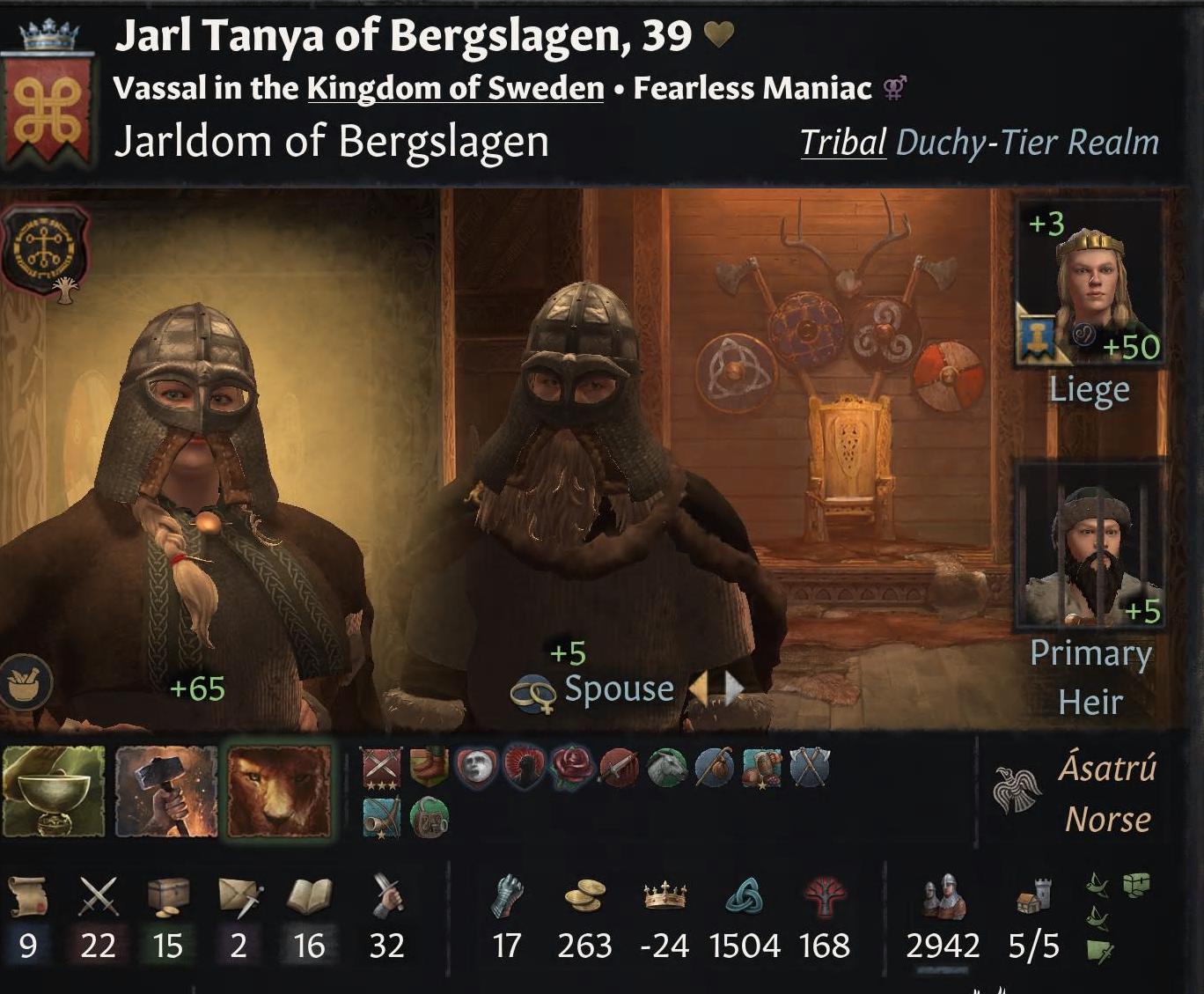

Perhaps no other ruler of the late ninth century CE matched the infamy of Tanya I 'the Evil', Jarl of Bergslagen, Viken, Agder, and Vestlond. The female ruler was derided by later accounts of the age as a murderous madwoman who stopped at nothing in her relentless pursuit of power. Modern historians discount these accounts as the likely propaganda of her enemies in the male-dominated Norse culture. Tanya's enemies were numerous as she expanded the realm of the first Swedish king and queen, Björn Ironside and later his granddaughter Jórunn. Like Huld, Tanya wasted no time preying on the abandoned lands of Jarl Ivàri and his weak neighbors, expanding her personal domain and the reach of House Münso. Undoubtedly, Tanya was a force to be reckoned as a commander on the battlefield and as a ruler of men. In time, the reach of Tanya and her own dynasty would stretch far beyond the shores of Scandinavia.

Conclusion
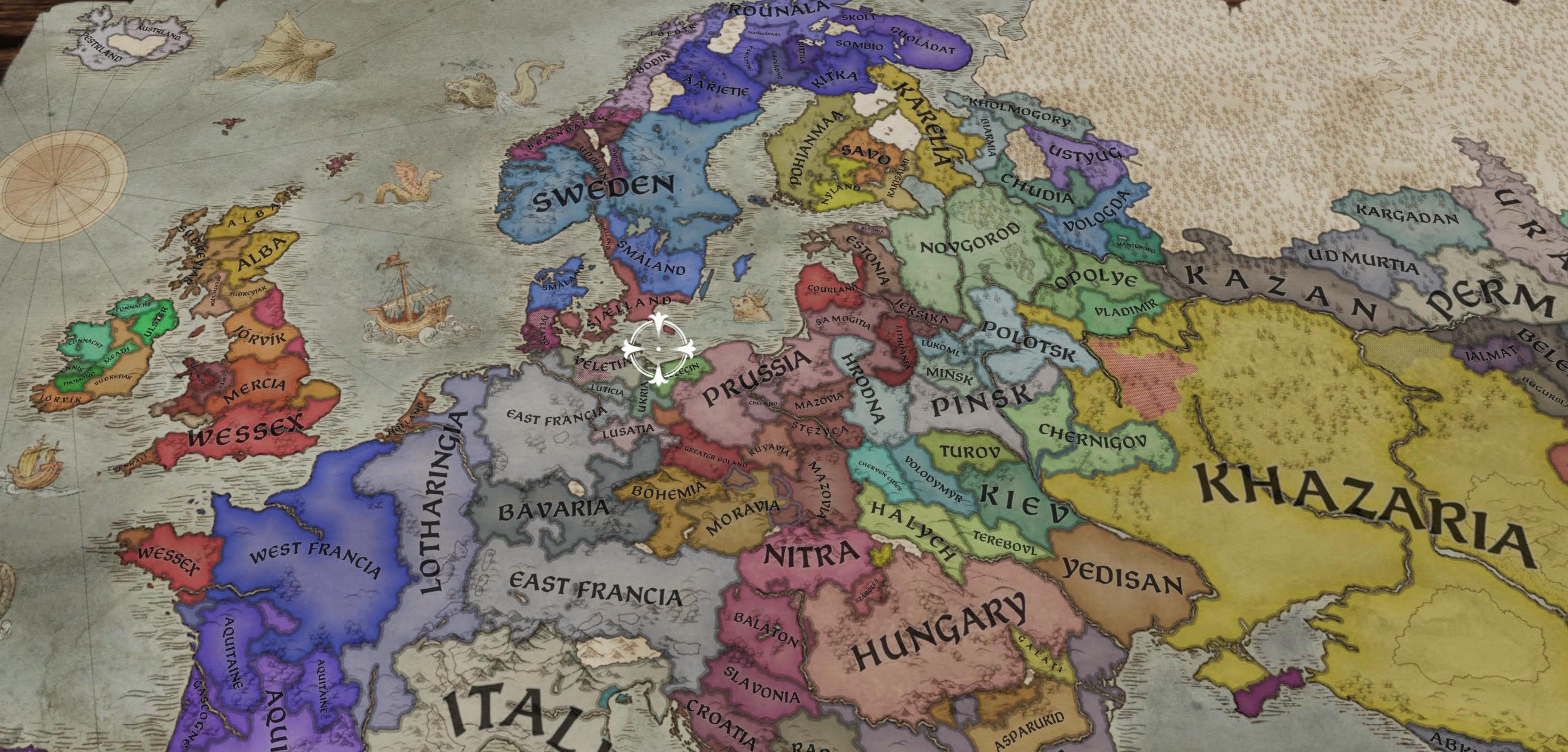
The late ninth century CE saw the arrival of great adventurers into the annals of history along with their dynasties. While their realms were forged through conquest and opportunity, the Viking adventurers would soon be tasked with managing the divide between their old ways of life and those of their new homelands. The next generation of these rulers would grapple with the consequences of their forefathers and be forced to determine which traditions would remain and which would be cast away. For those opportunists who yet remained in the lands of their ancestors, they would be tasked with deciding where the fate of their houses lied. Altogether, the stories of these adventurers would carry on throughout the Viking era as their actions would forever alter the course of history.
Last edited:


